Rhine River Cruise Day 2 - Cologne - Day 9
|
| Through the night we cruised down the Rhine River arriving in the morning near Cologne. |
| |
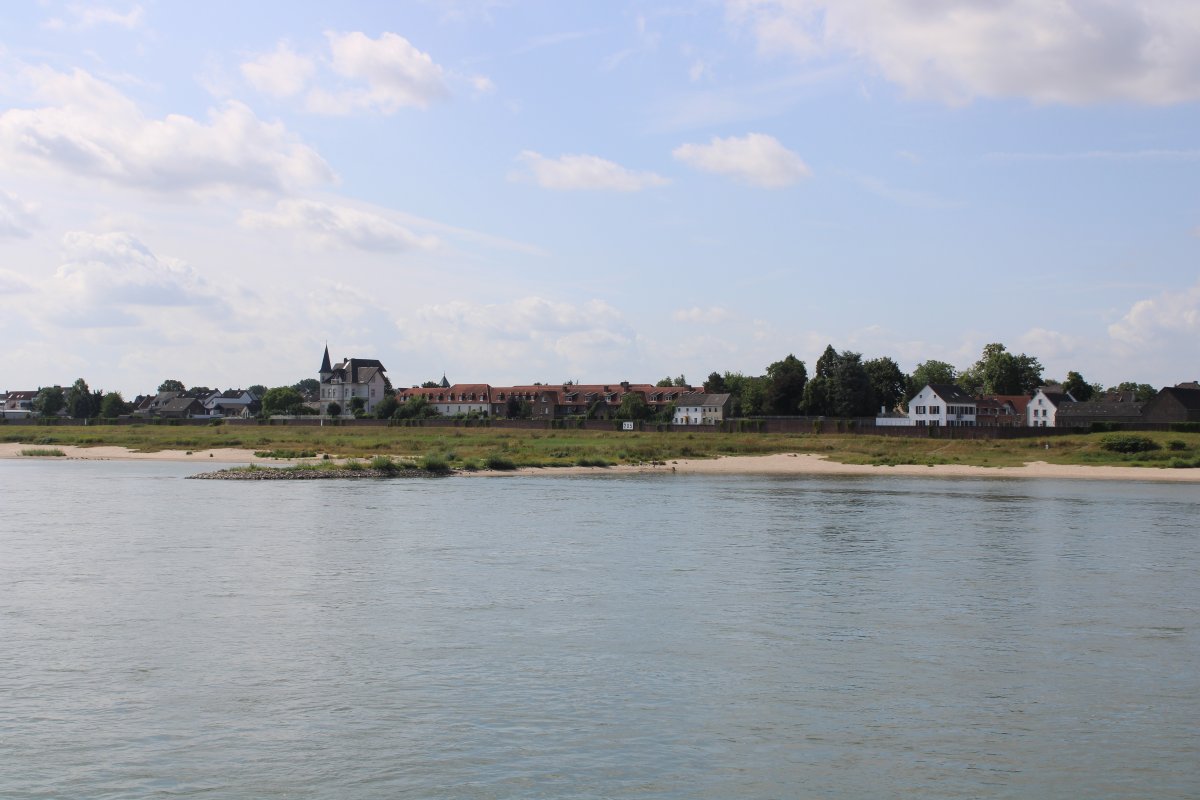 |
|
| Passing by a big Ford automobile factory, of all things. |
| |
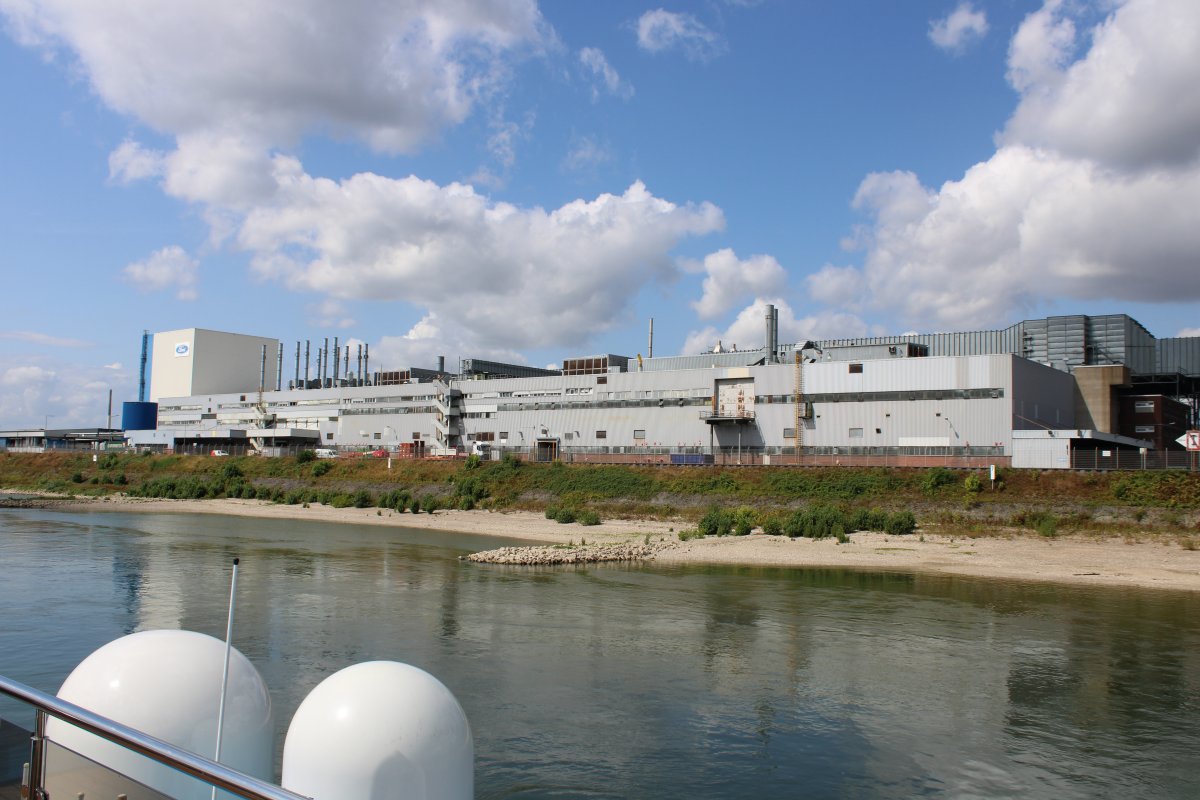 |
|
|
Our cruise boat passed by the city of Cologne and docked on the southern part of town- east side. Then we were bused into Cologne.
Here we are looking north -- you can see the Cologne Cathedral (Kolner Dom) in the distance.
|
| |
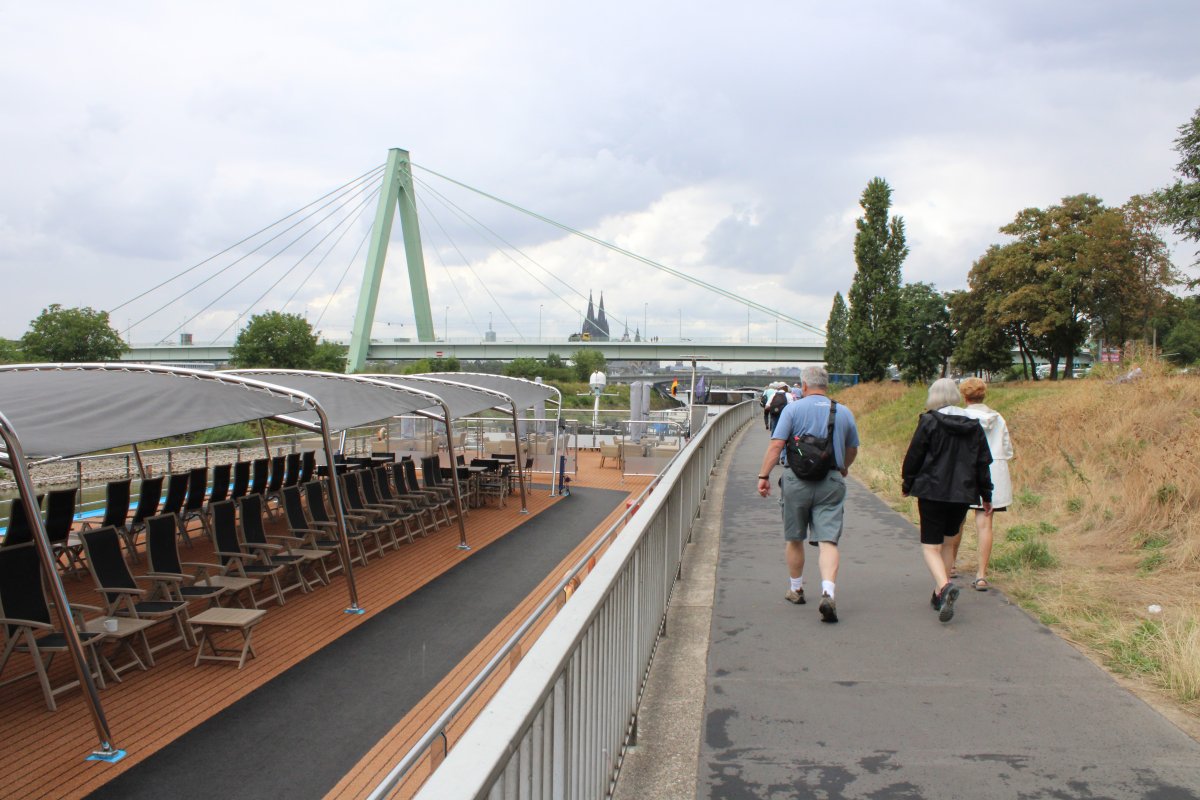 |
|
| Some funky buildings. |
| |
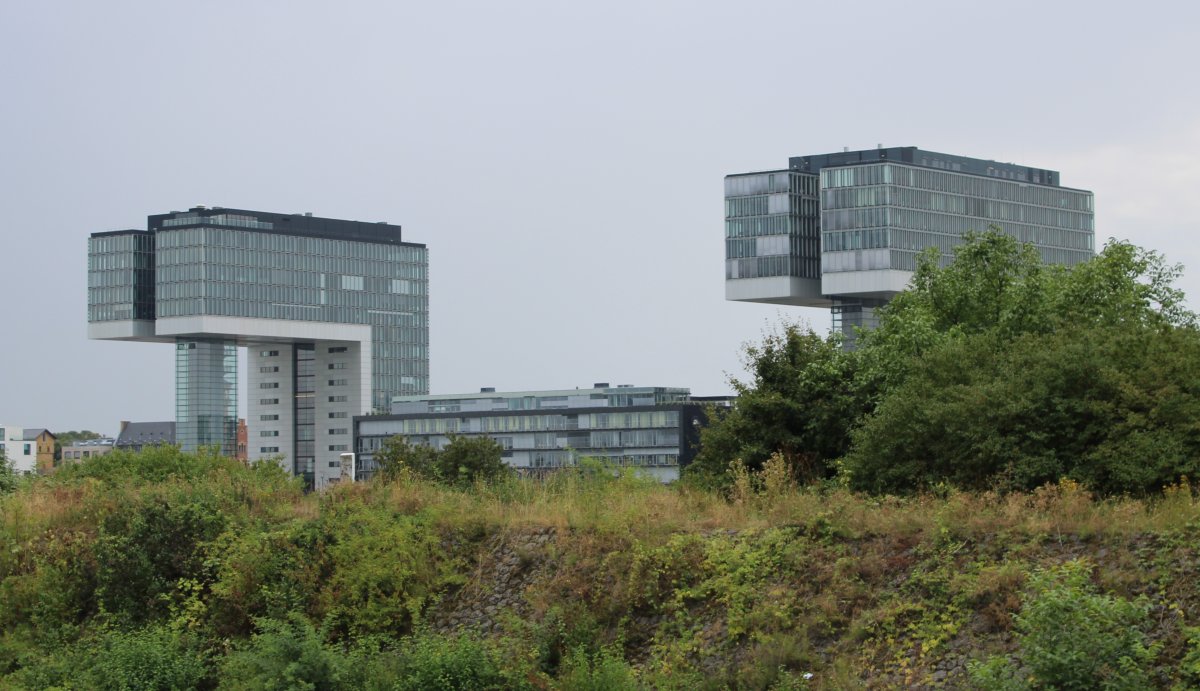 |
|
|
Getting closer to the Cathedral.
Cologne is Germany's fourth-largest city and the largest city on the Rhine River.
|
| |
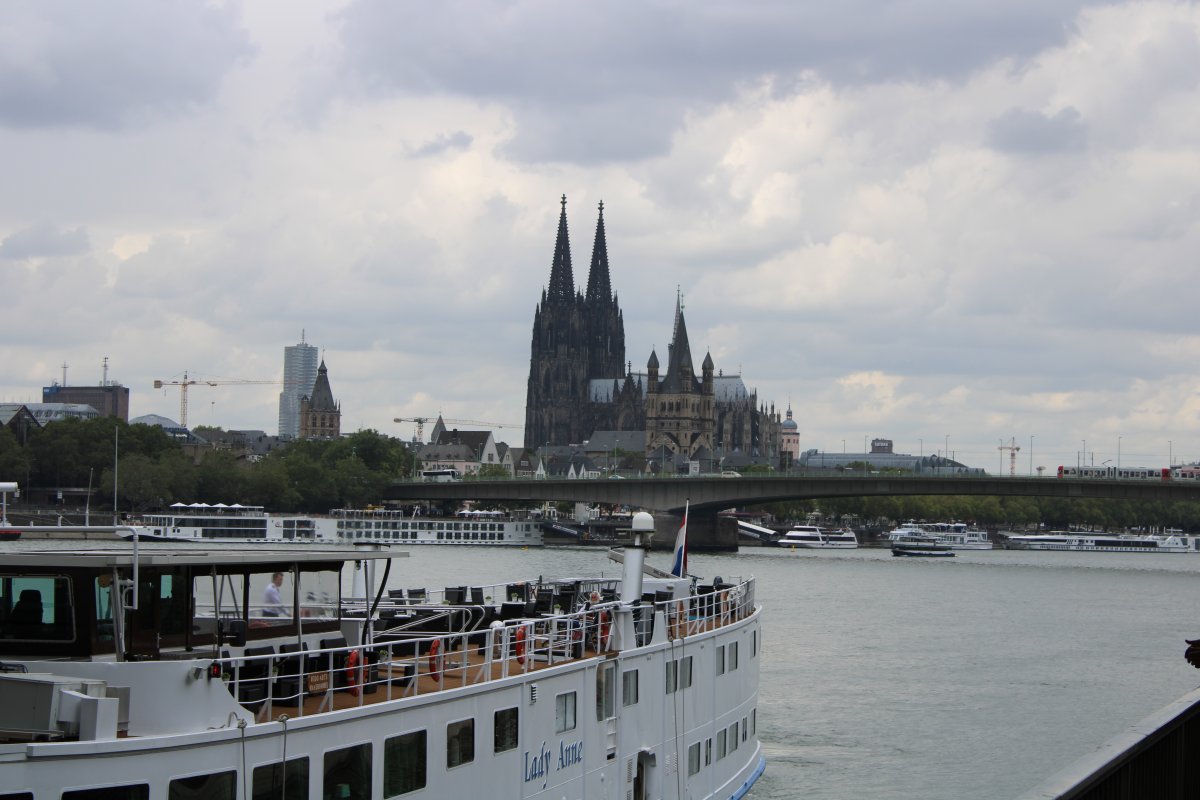 |
|
| The main entrance to the Cathedral. We were in a small group and had a tour guide who was excellent. |
| |
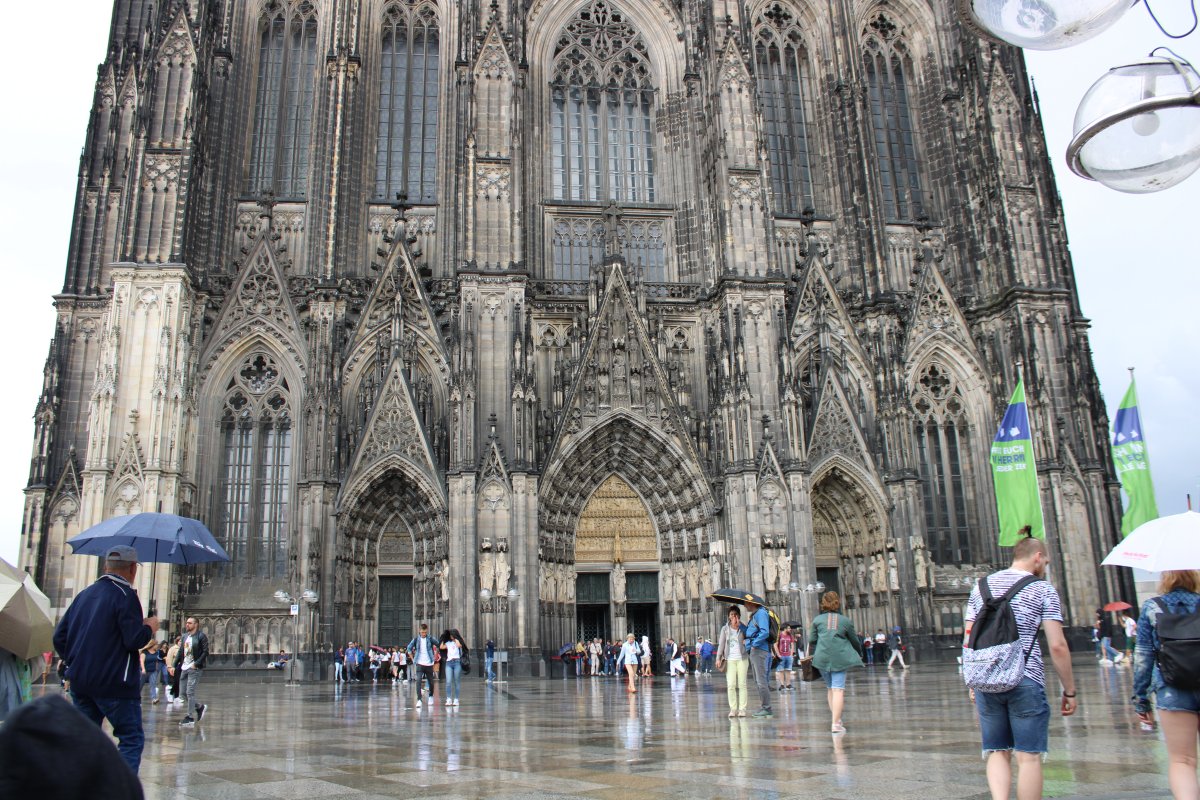 |
|
|
Looking up at the two spires.
The church was begun in 1248 but stalled in the Middle Ages and was not finished until 1880. However, it is still considered a Gothic church because it was finished according to its original plans.
|
| |
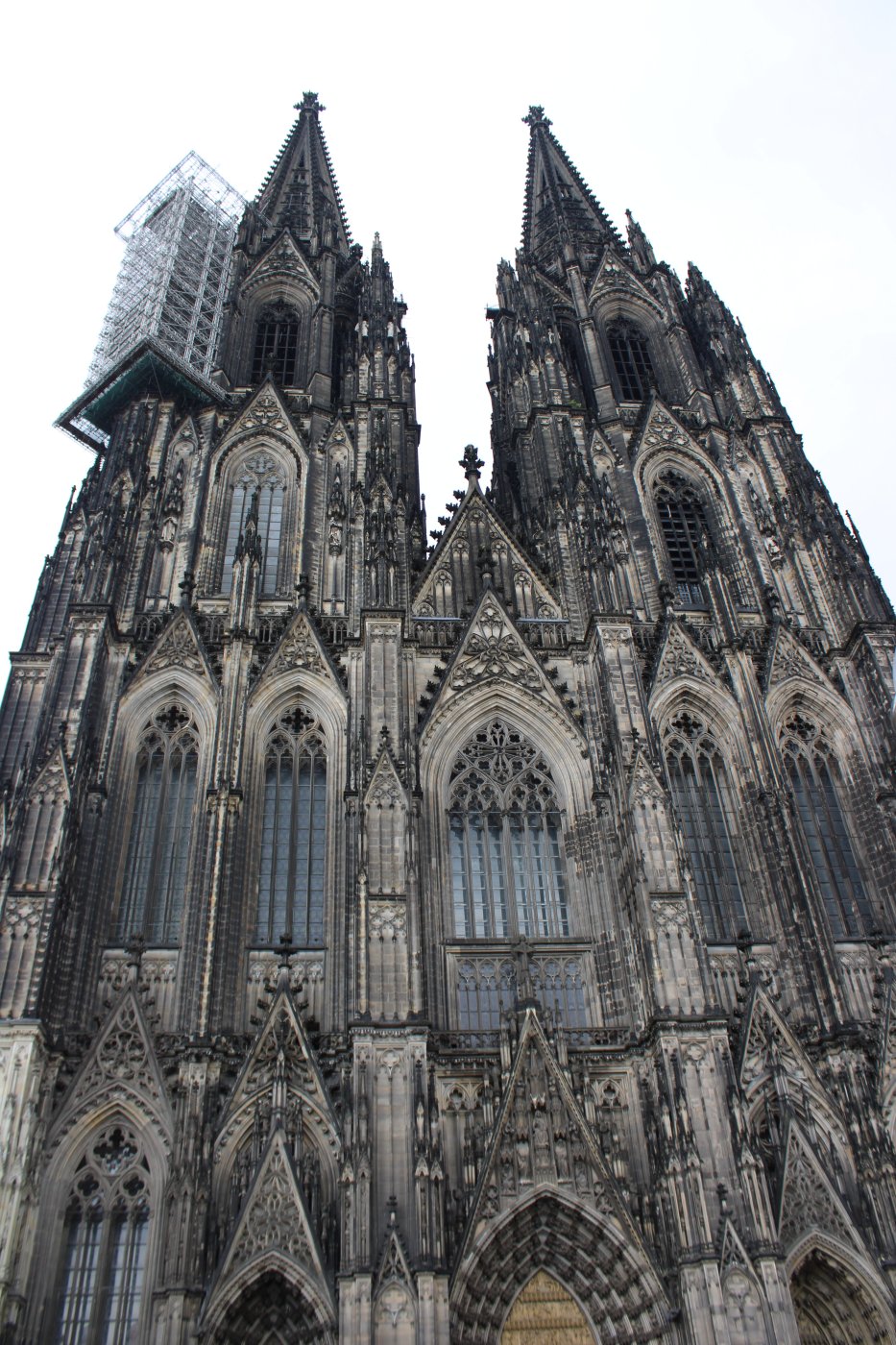 |
|
|
|
| |
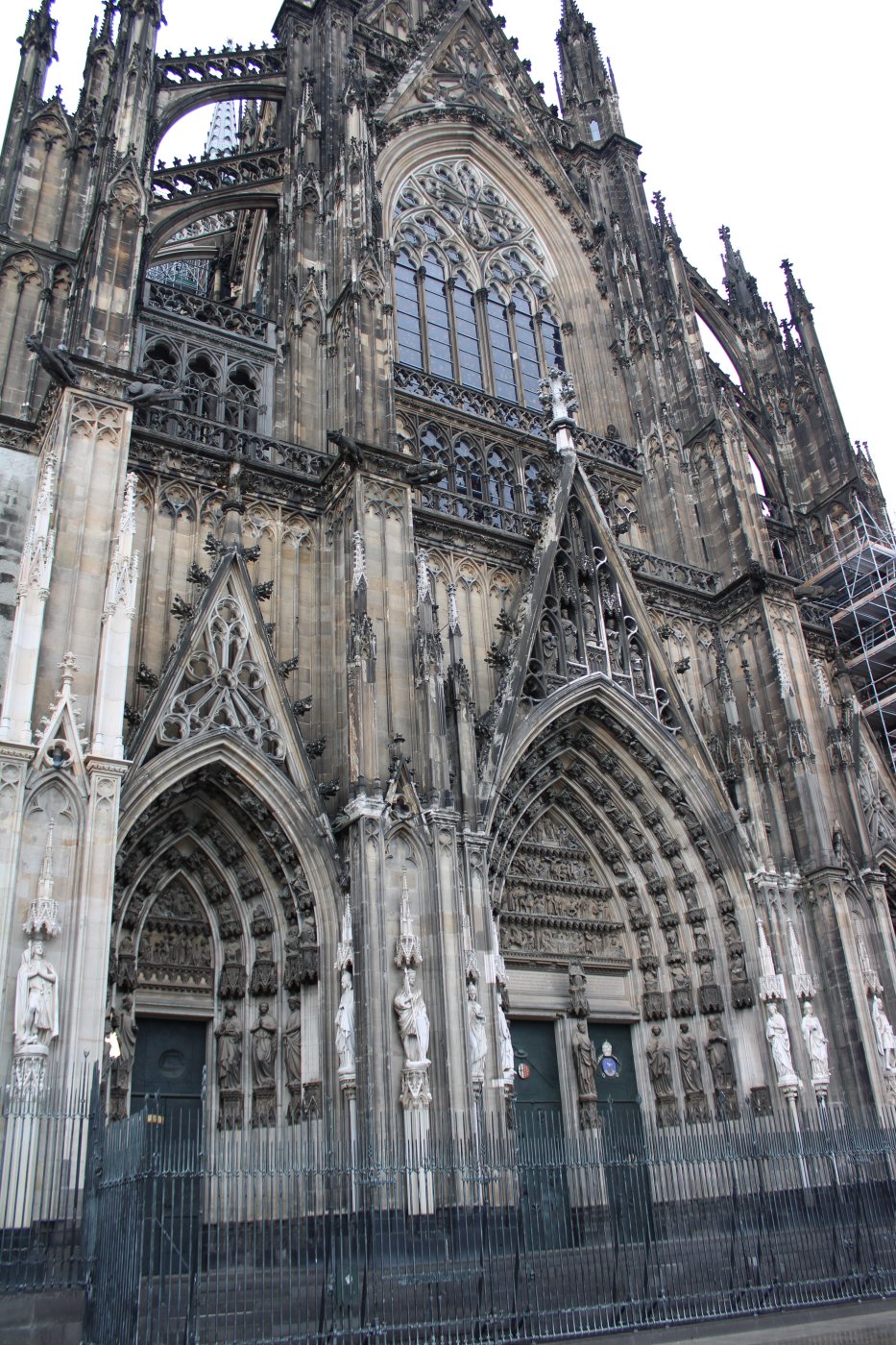 |
|
|
South-side of the Cathedral.
|
| |
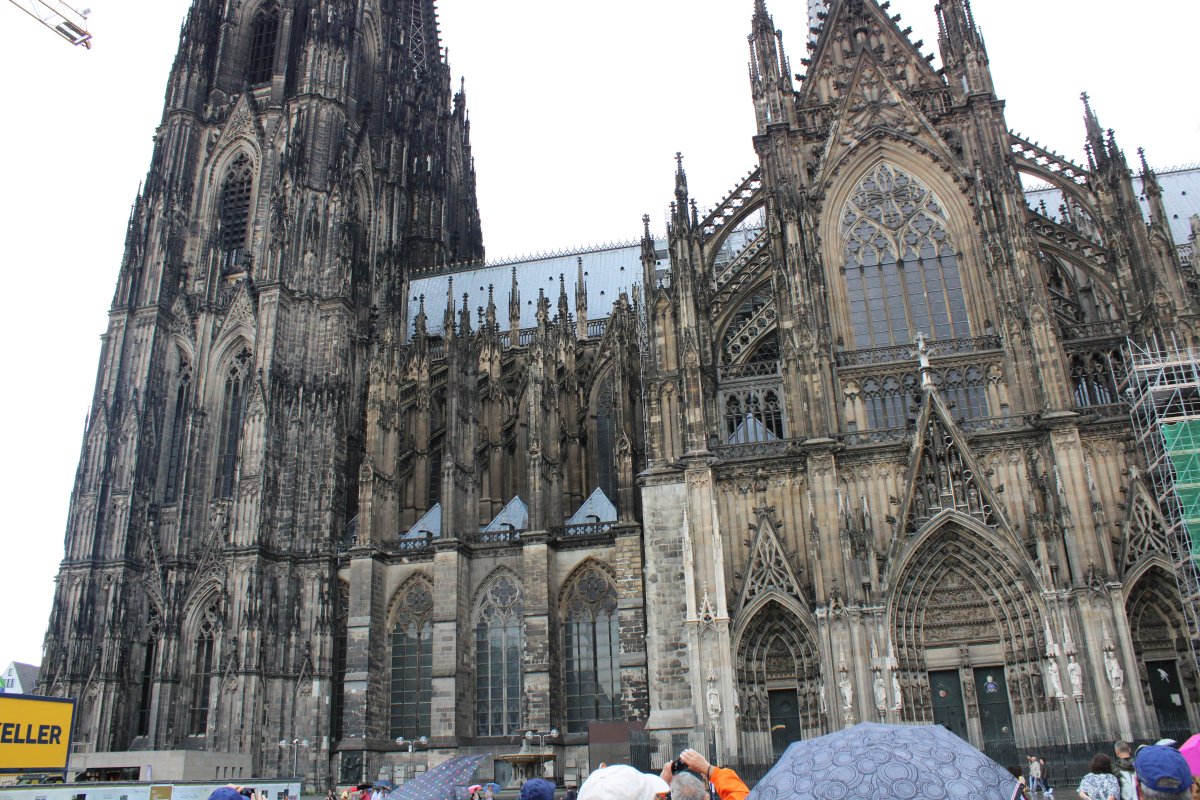 |
|
| |
| |
 |
|
|
Lynnette and I have been to quite a few Cathedrals by now but this is the first one where we've had a live tour guide.
The ceiling is 140 fet tall.
|
| |
 |
|
|
|
| |
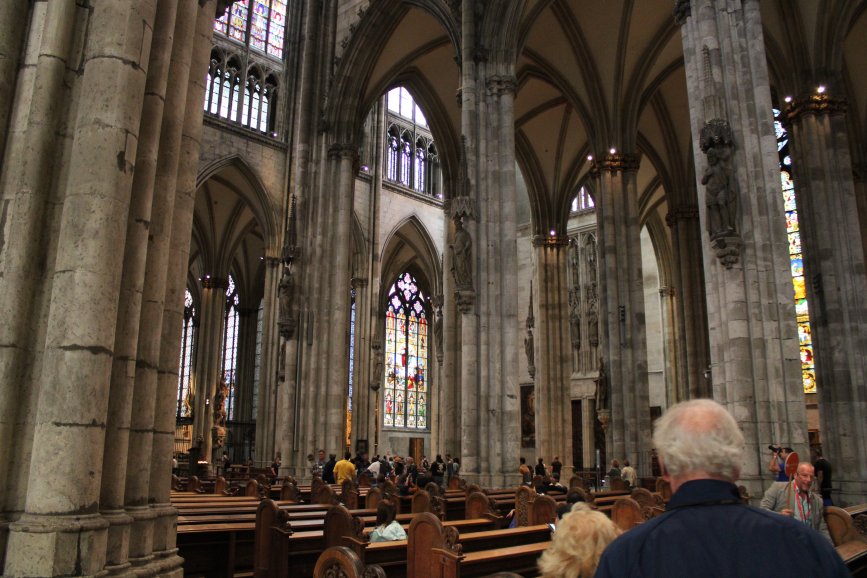 |
|
| This is the oldest stained glass window, at the east end of the cathedral. |
| |
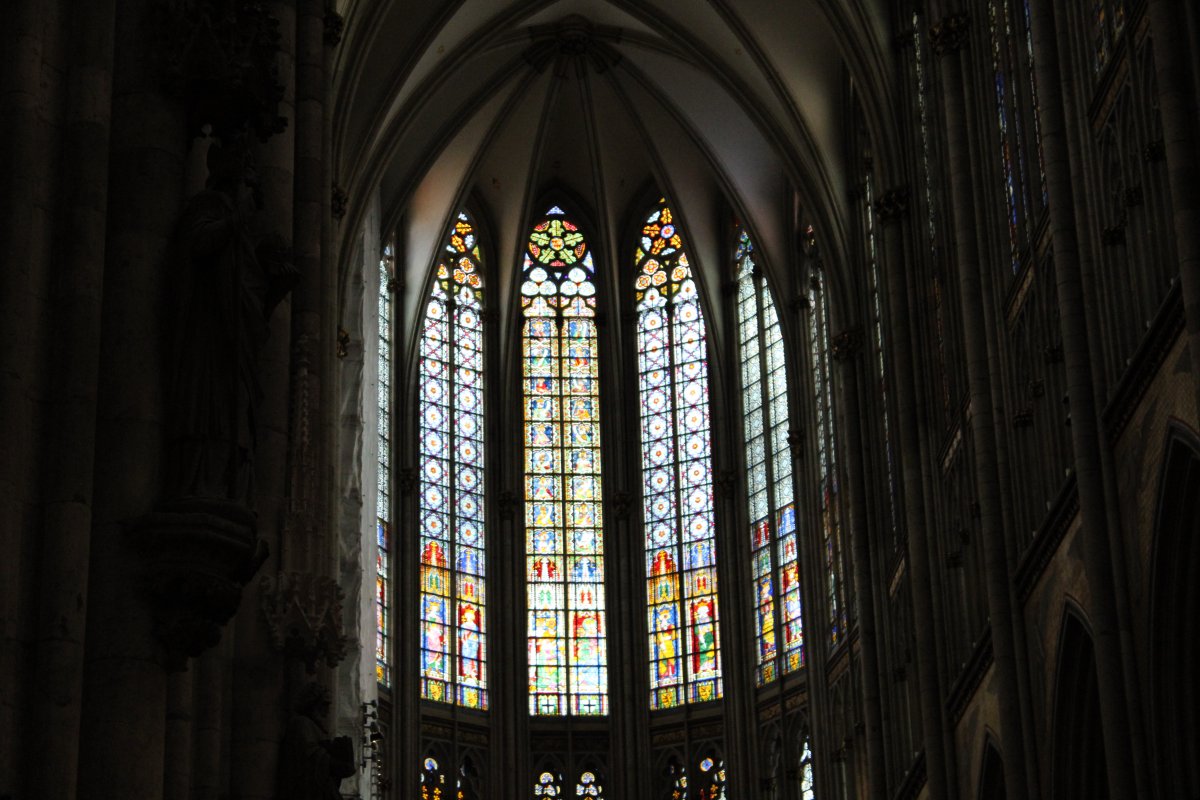 |
|
|
That's our tour guide at lower left. He had a microphone and we all had these audio devices, so we could hear him clearly even in the crowded Cathedral.
|
| |
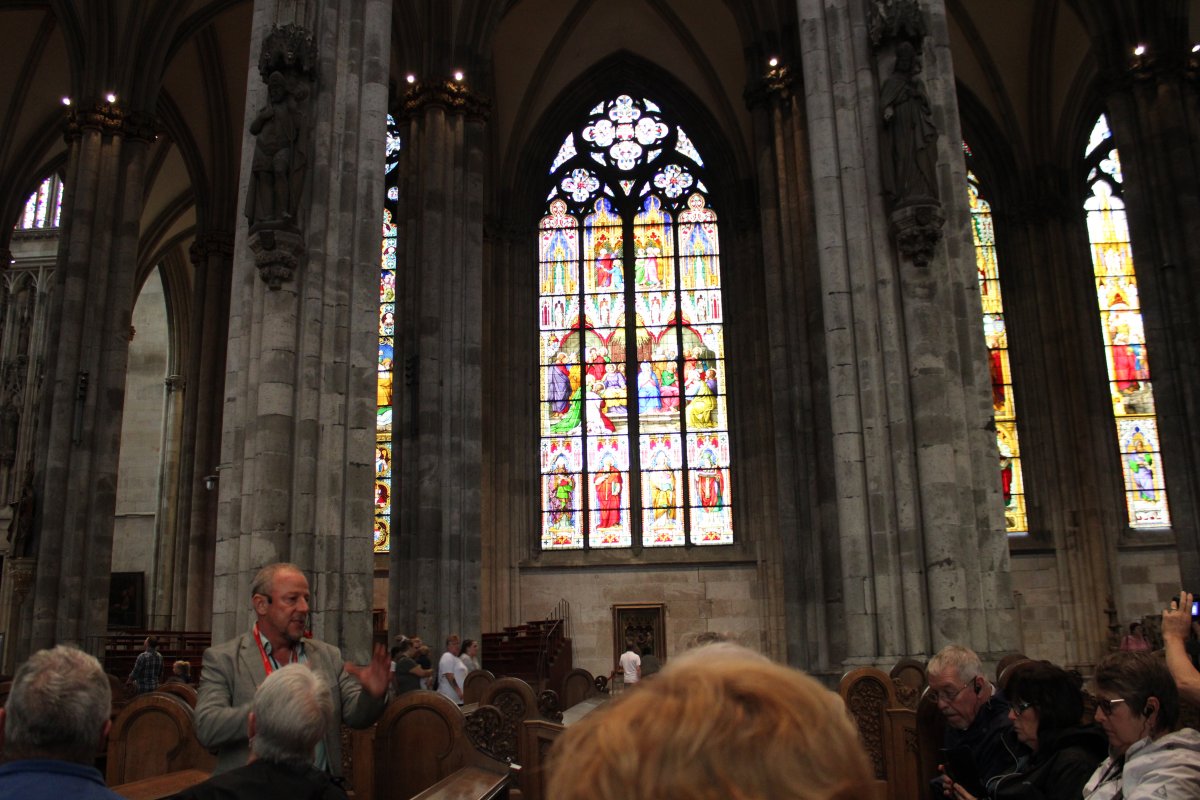 |
|
| The stained glass windows fill the church with light, which represents God. |
| |
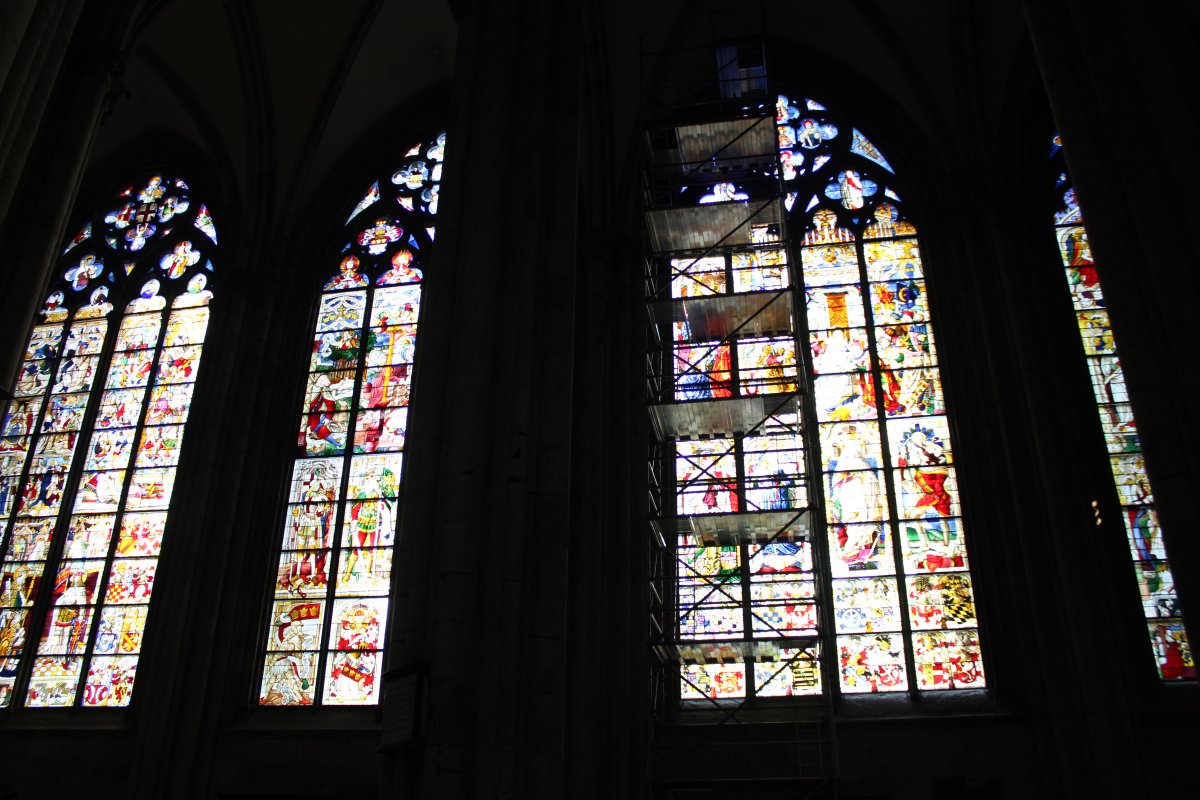 |
|
|
|
| |
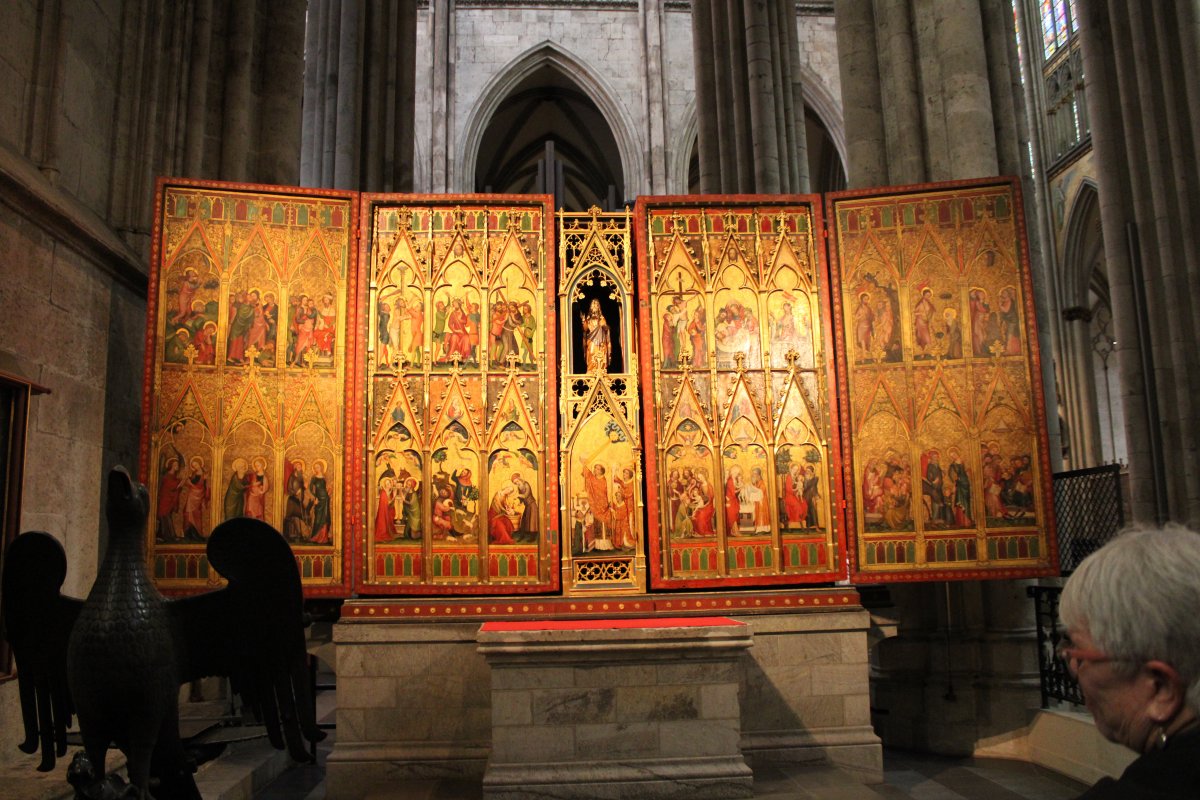 |
|
| A "modern" stain-glass-window. In 2007, a local artist named Gerhard Richter designed this window using colors sampled from the more-historic windows and placed randomly. The then archbishop of the cathedral, Cardinal Joachim Meisner, who had preferred a figurative depiction of 20th-century Catholic martyrs for the window, did not attend the unveiling. |
| |
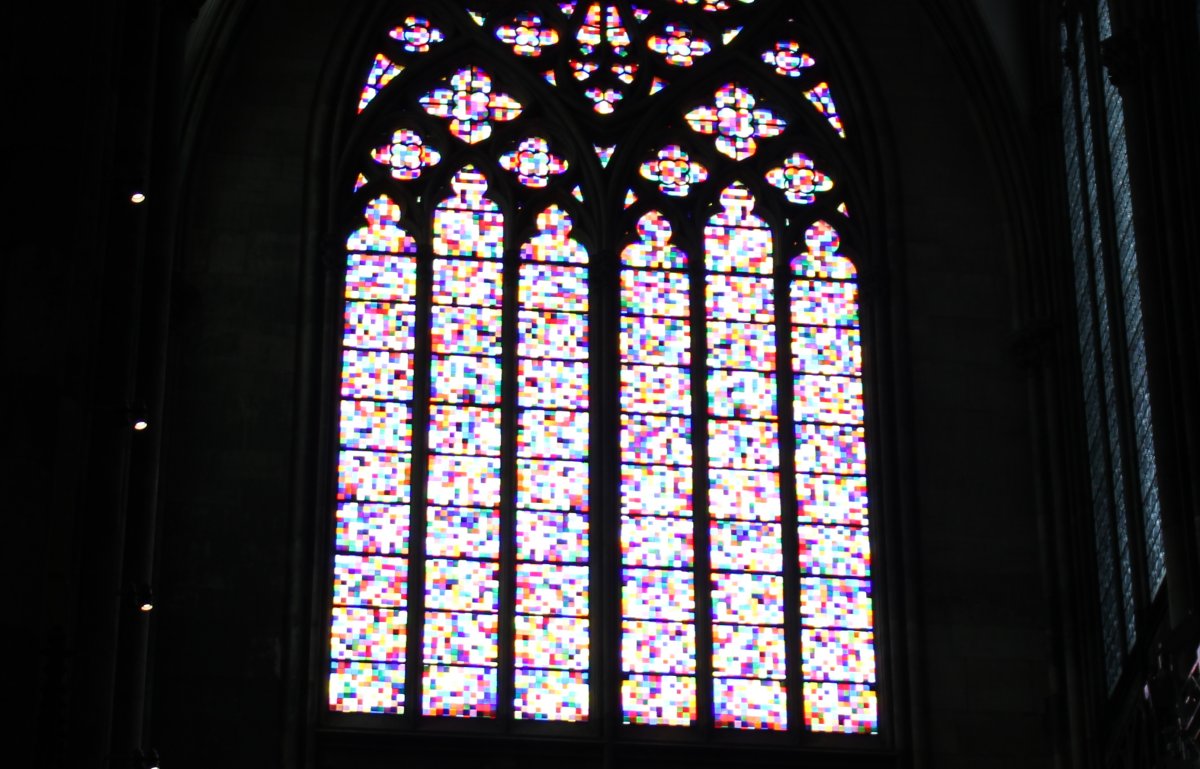 |
|
| A large circular floor mosaic. |
| |
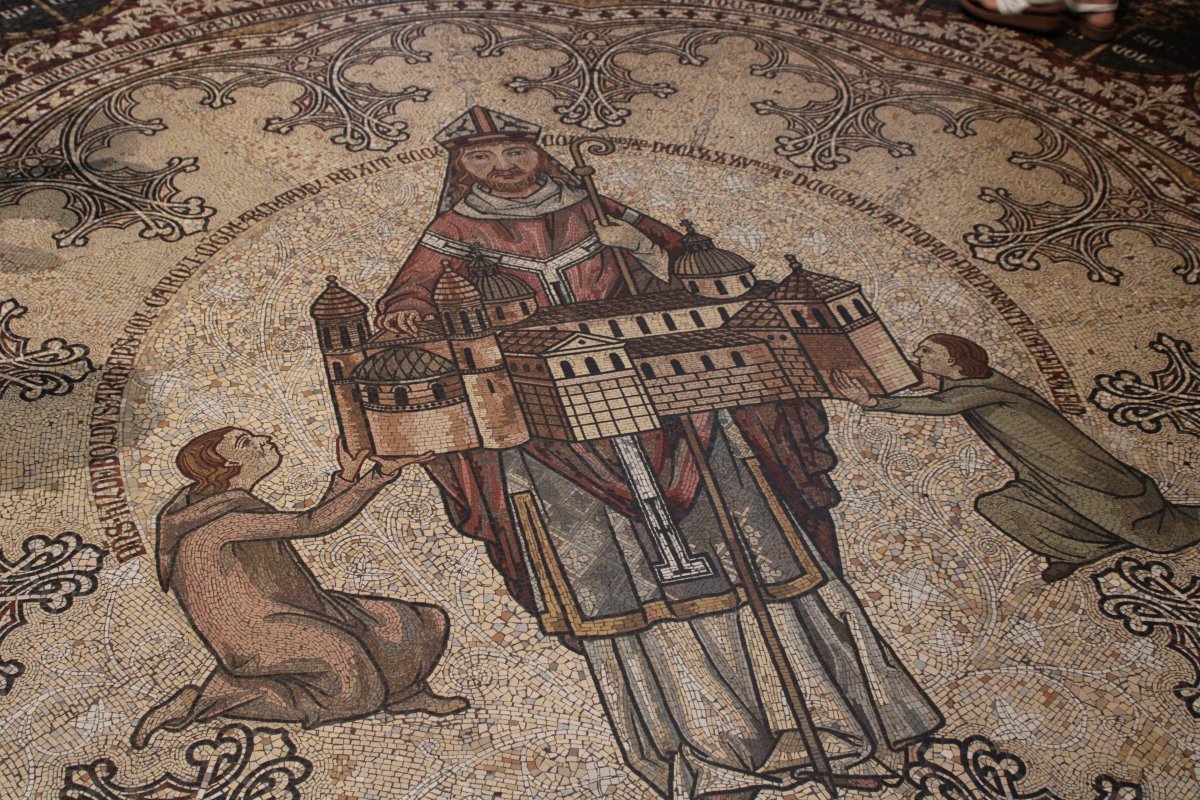 |
|
|
This is the Chapel of the Cross. That is the oldest surviving monumental crucifix north of the Alps.
|
| |
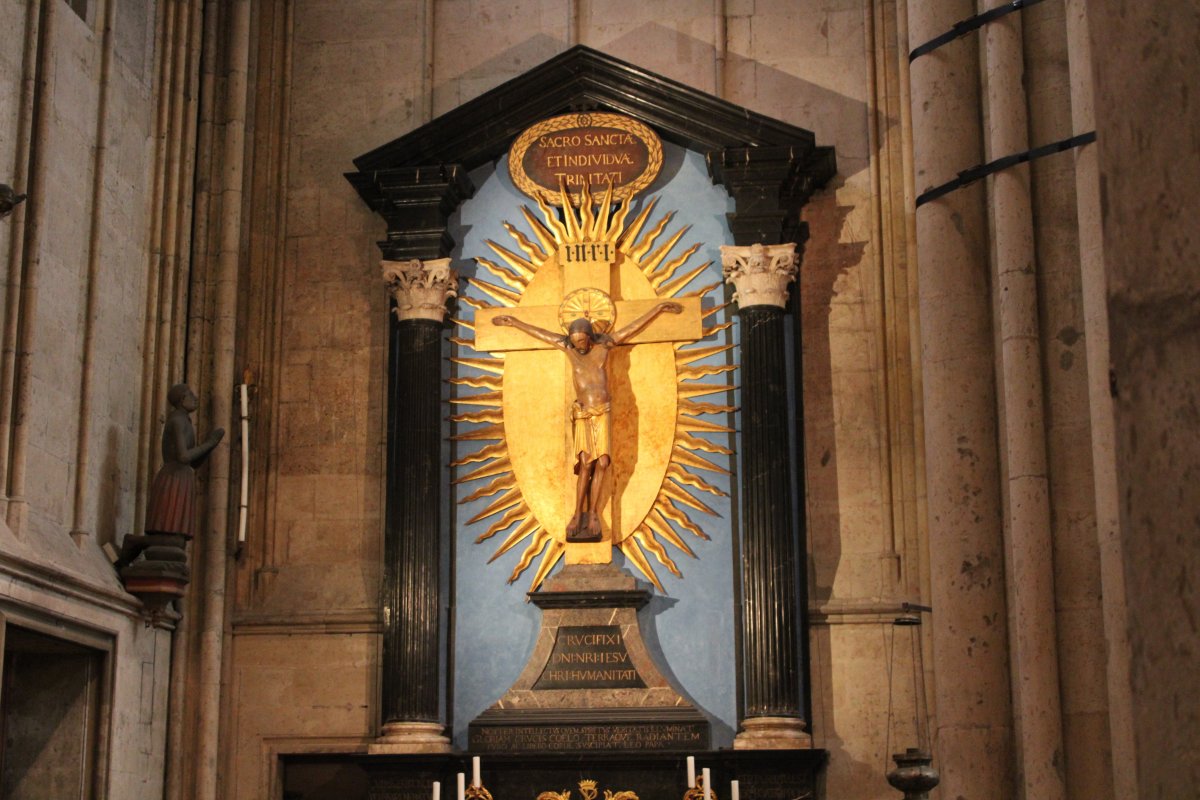 |
|
|
The Shrine of the Magi.
From Rick Steves - Relics were a big deal in the Middle Ages. Cologne's acquisition of the bones of the Three Kings -- the Three Wise Men -- in the 12th century put it on the pilgrimage map and brought in enough money to justify the construction of this magnificent place. The three kings were the first to recognize Jesus as the Savior and the first to come as pilgrims to worship him -- inspiring medieval pilgrims and countless pilgrims since. For a thousand years, a theme of this cathedral has been that life is a pilgrimage .. a search for God.
|
| |
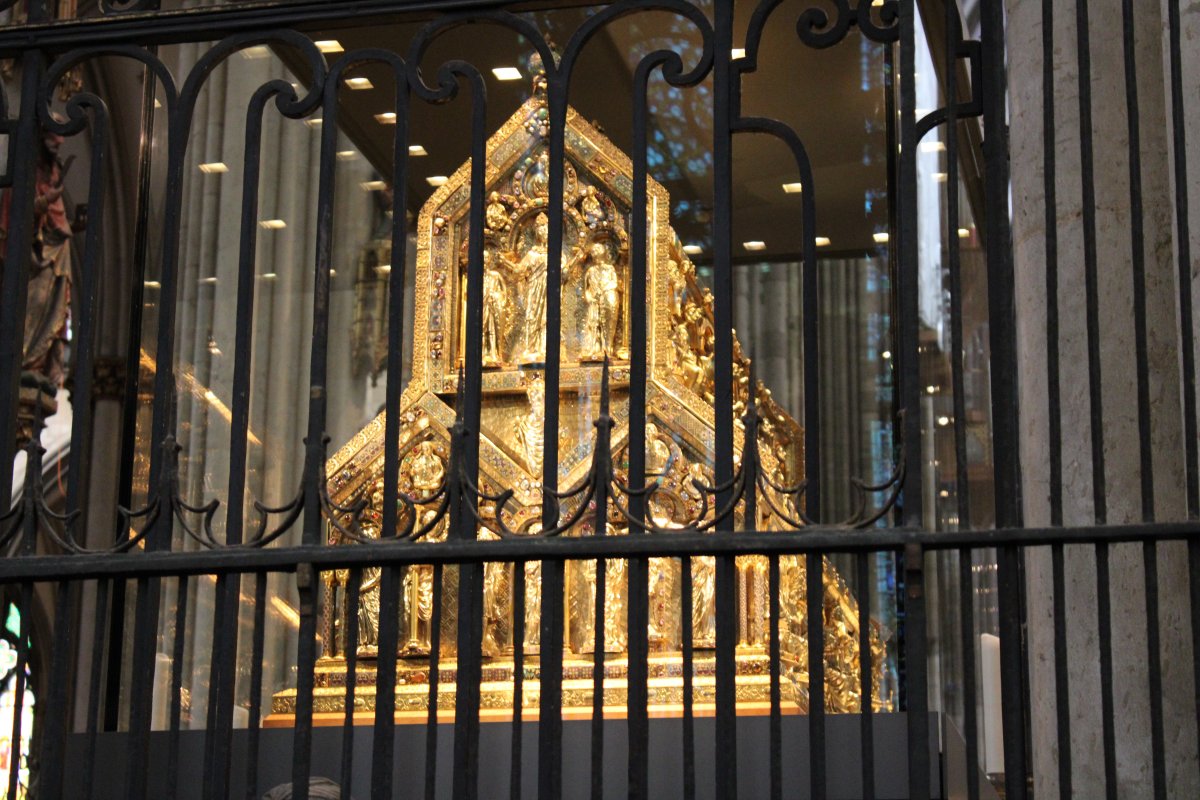 |
|
|
From Rick Steves - This reliquary, made in about year 1200 of gilded silver, jewels, and enamel, is the biggest and most splendid I've seen. On the long sides, Old Testament prophets line the bottom, and 12 New Testament apostles -- with a wingless angel in the center -- line the top. The front looks like three stacked coffins, showing scenes of Christ's flagellation, Crucifixion, and Resurrection.
|
| |
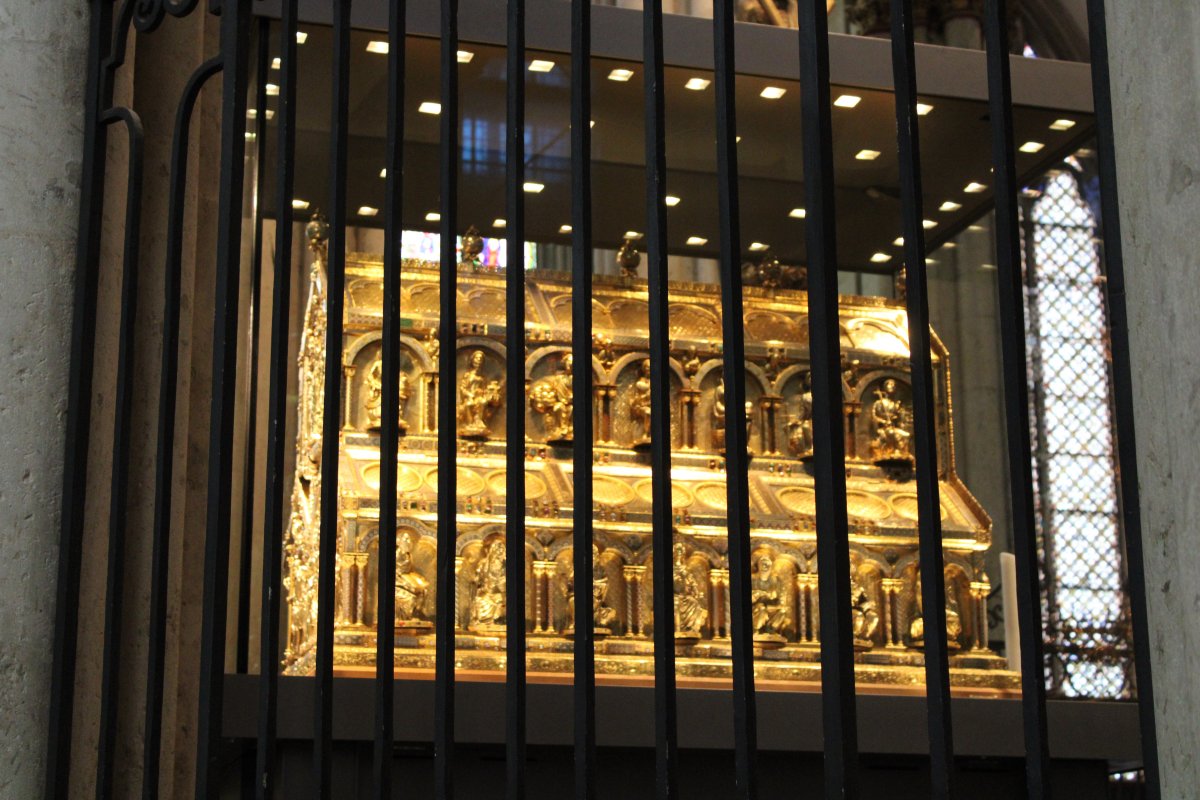 |
|
| The Patron Saints of Cologne in the Chapel of the Virgin. It was painted around 1440. From Rick Steves -- Notice the photographic realism and believable depth. There are literally dozens of identifiable herbs in the grassy foreground. |
| |
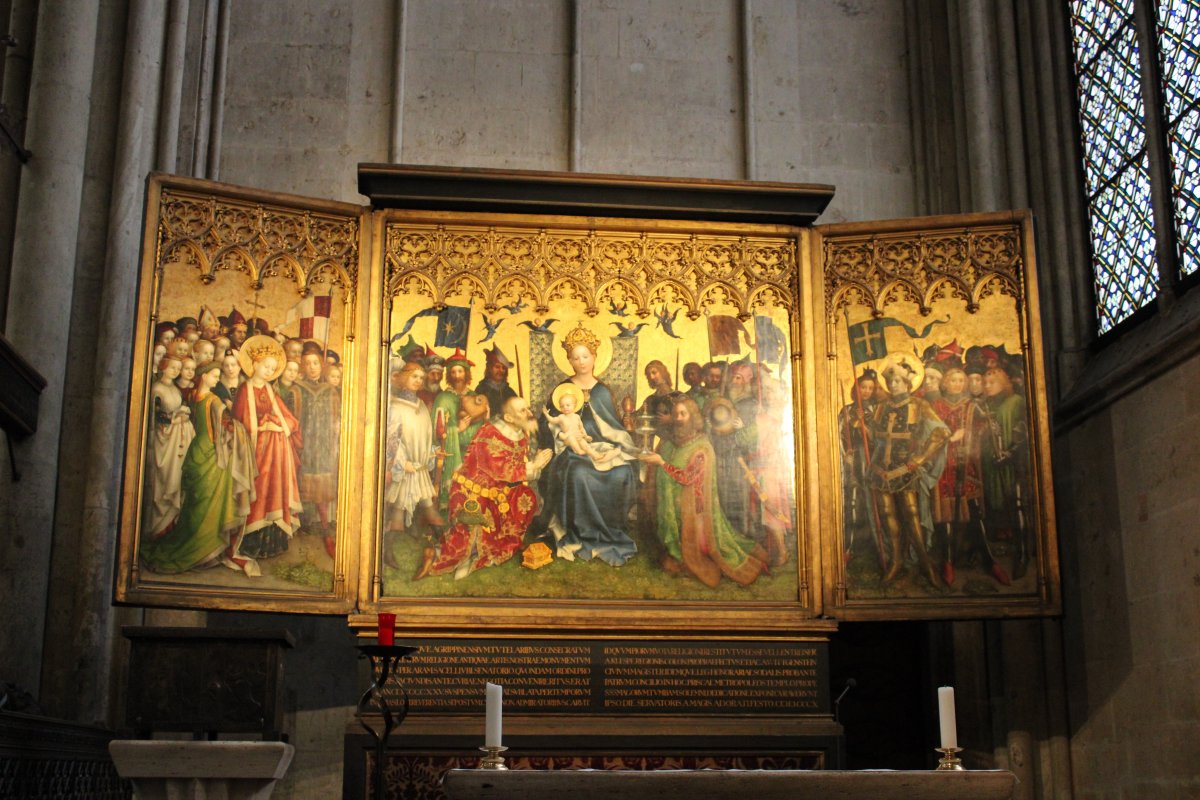 |
|
| The statue of St. Christopher with Jesus on his shoulder. Since 1470, pilgrims and travelers have looked up at him and taken solace in the hope that their patron saint is looking out for them. |
| |
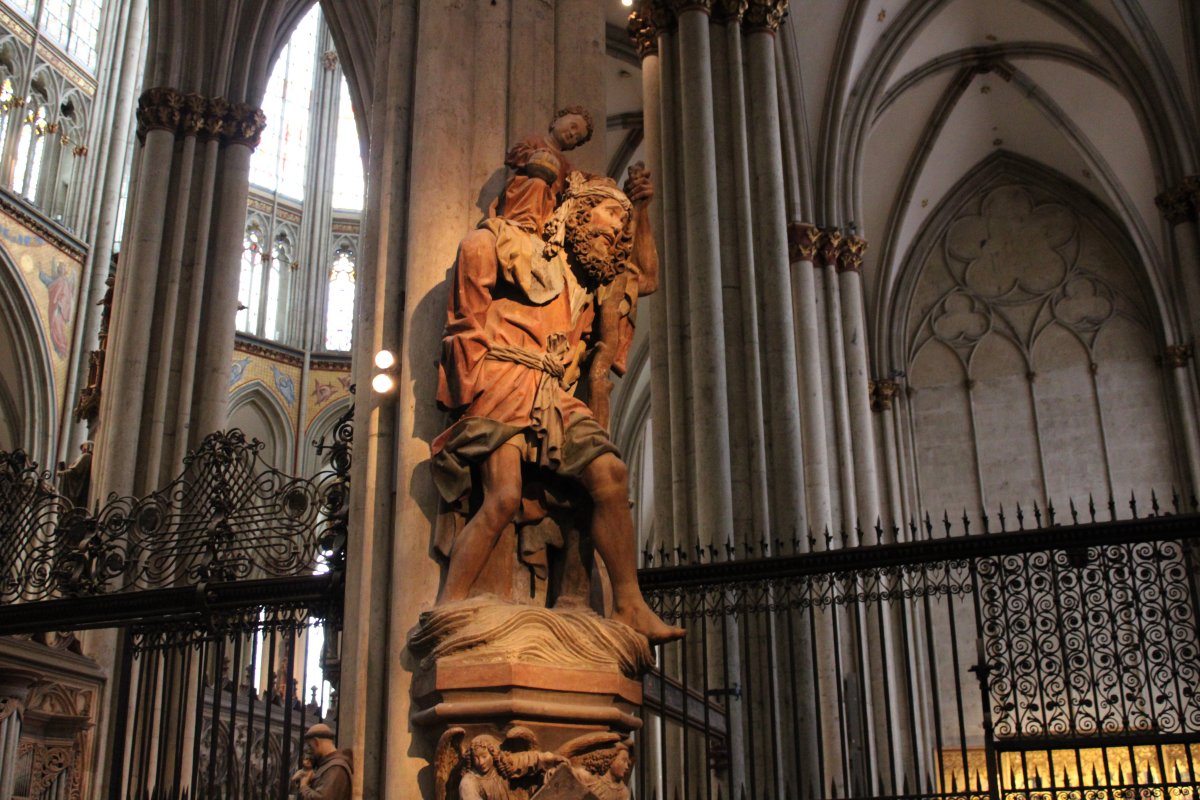 |
|
| Notice how the statue on the right has been recently restored and is clean white compared to the others. There is ongoing conservation at the cathedral to address the problem of the black discoloration caused by the sandstone reacting with sulfuric acid during rainfall. The acidic rain is a consequence of air pollution. |
| |
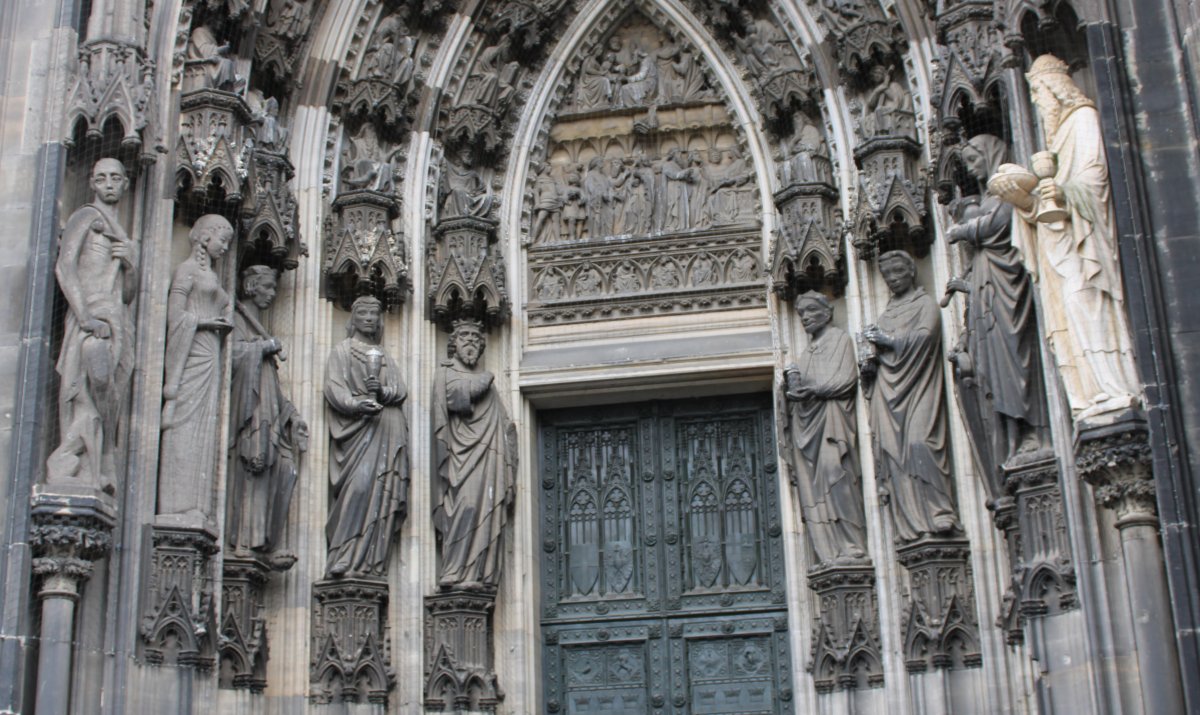 |
|
|
|
| |
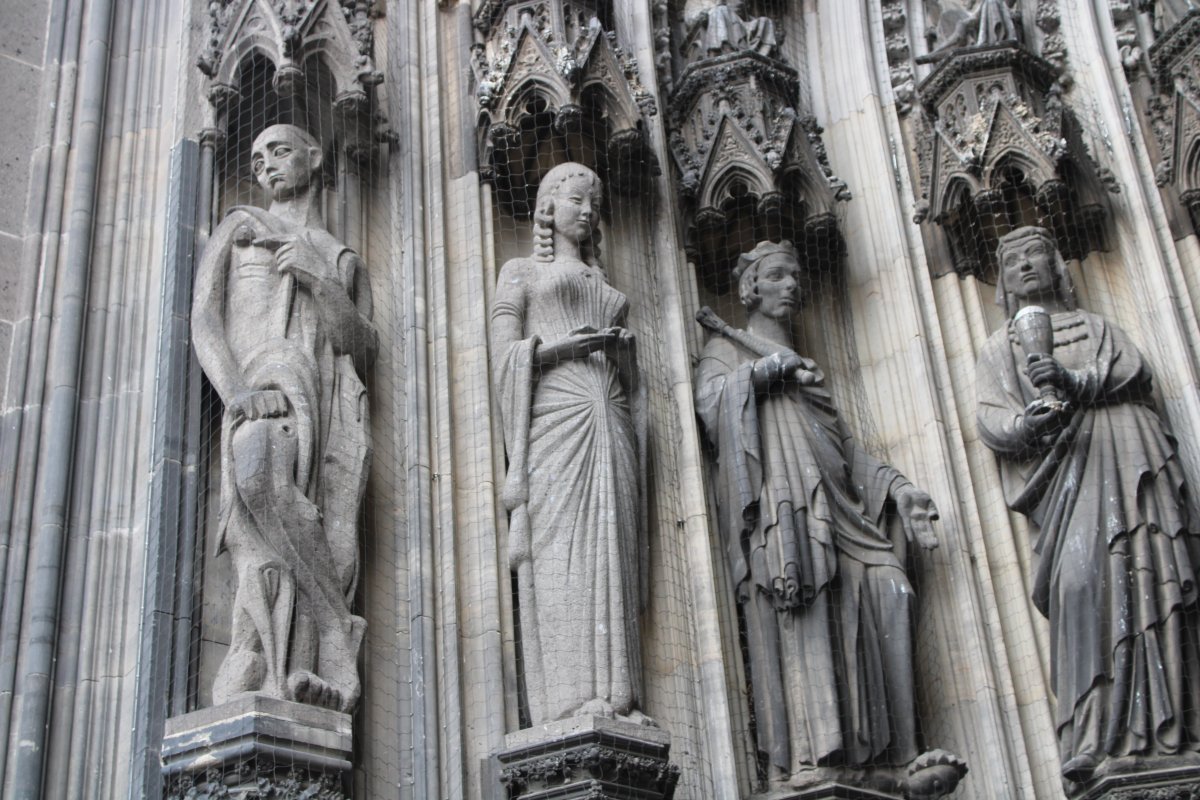 |
|
|
Battle damage from World War II.
By coincidence, earlier in the year I had read "Spearhead" by Adam Makos. The book focused on the crew of a M26 Pershing tank of the 3rd Armored Division -- the "Spearhead Division" -- in World War II. The climax of the book was a tank battle between the American Pershing tank and a German Panther tank in Cologne. The Pershing won, scoring a hit on the Panther which was parked right in front of the Cathedral.
|
| |
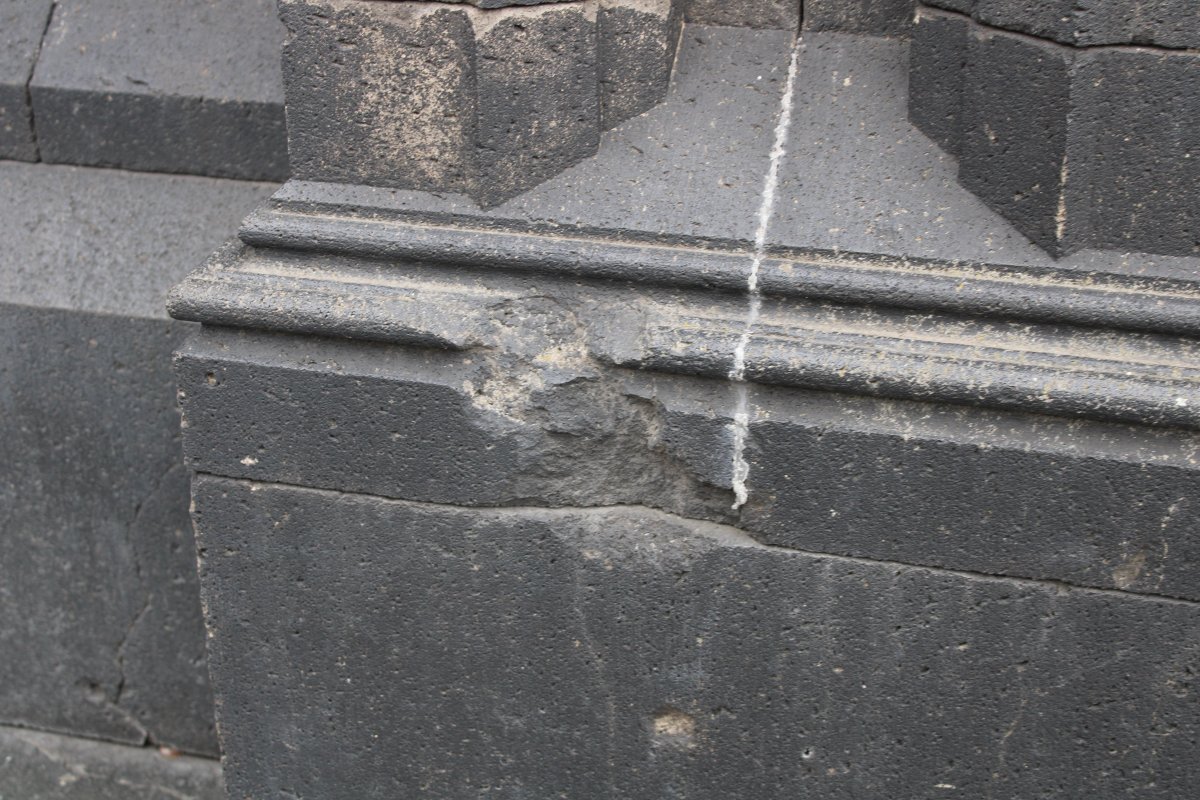 |
|
|
A photo of the knocked out German Panther tank in front of the Cathedral.
|
| |
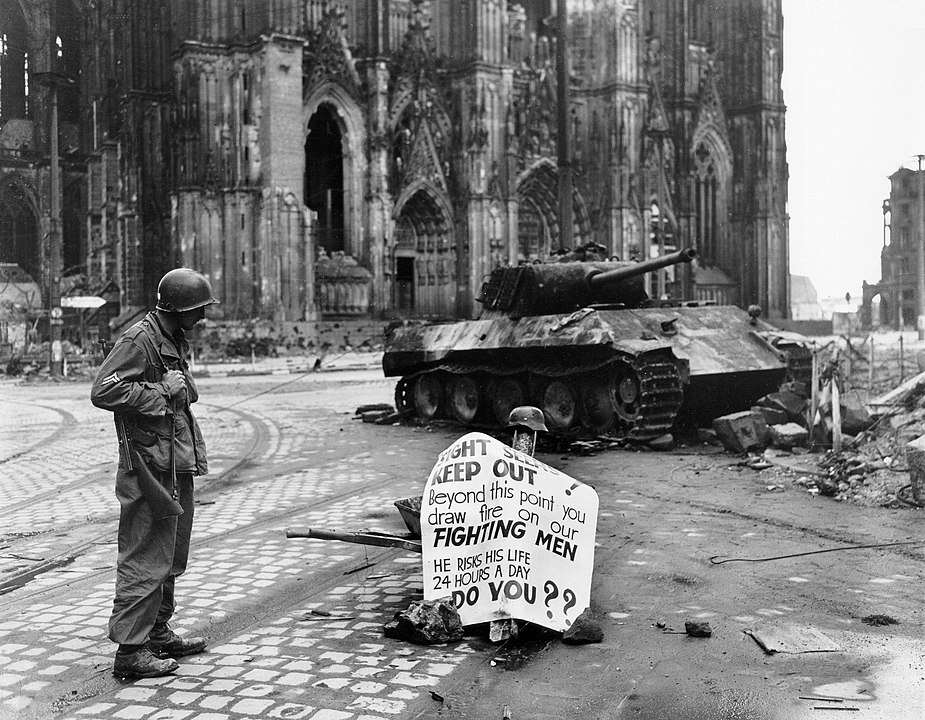 |
|
|
On the Cathedral's north side is Cologne's train station. Out of sight to the right is the Hohenzollern Bridge which Rick Steves says is the busiest railway bridge in the world (30 trains an hours).
|
| |
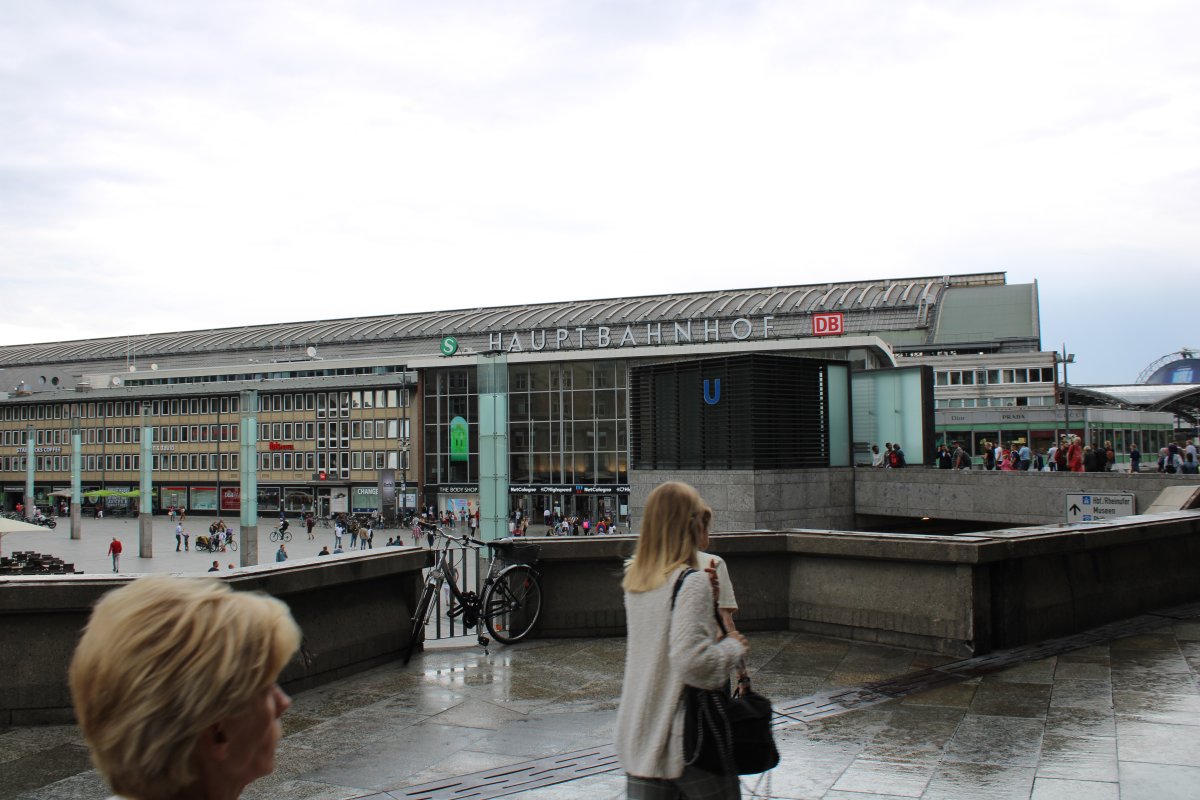 |
|
|
Cologne was one of the most heavily bombed cities in Germany during World War II. On one night alone, on 31 May 1942, Cologne was the target of the first 1,000 bomber raid by the Royal Air Force in World War II.
Although the Cathedral was hit by 15 bombs throughout the war, the skeletal Gothic structure flexed, and it remained standing. The stained glass and art treasures had been taken to a safe location and saved.
Here is a shot of the Cathedral looking west from the east side of the river. The bridge over the Rhine River was of course destroyed by the Germans to keep the Allies from using it.
|
| |
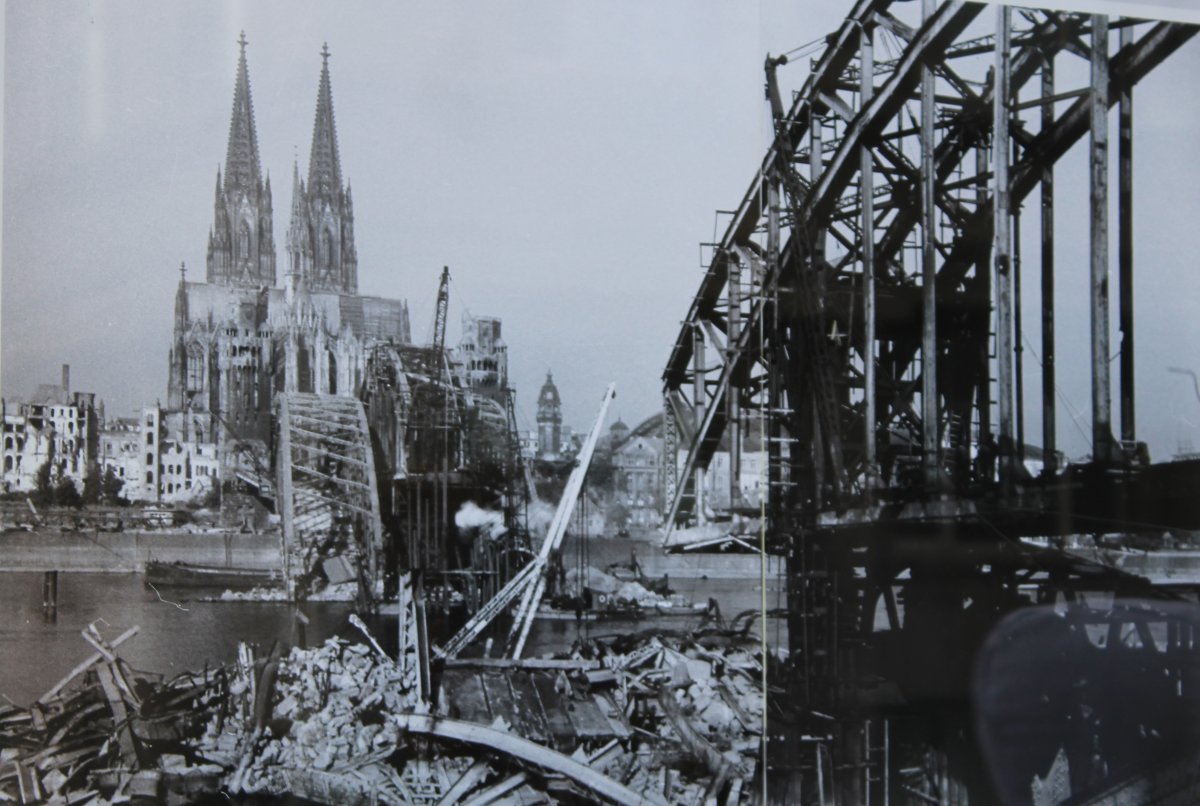 |
|
|
Aerial view of Cologne at the end of World War II.
|
| |
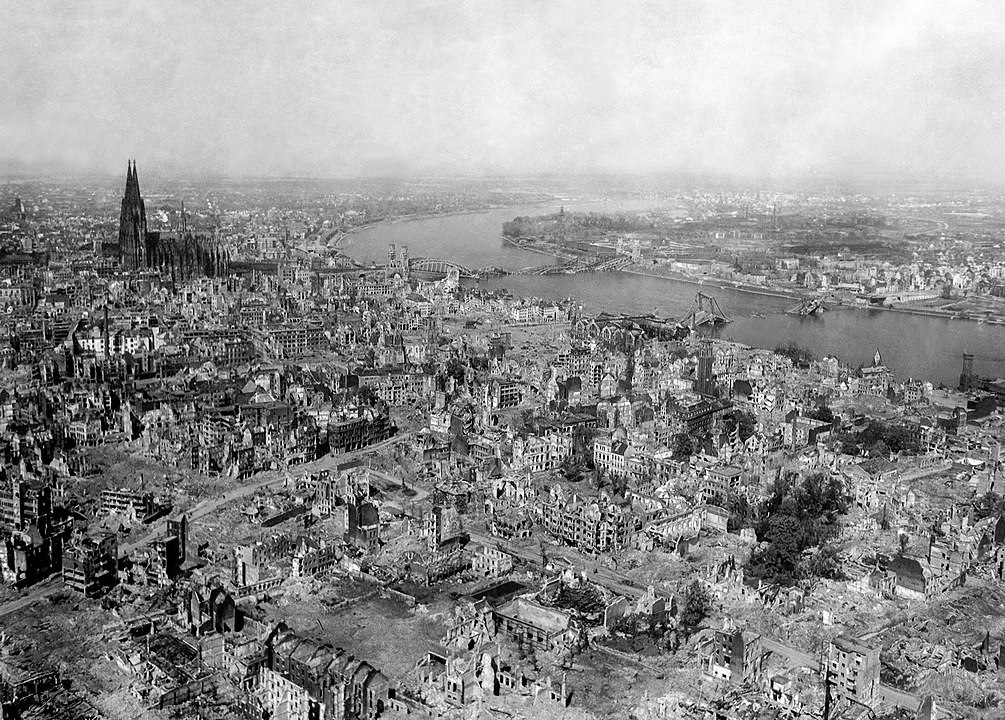 |
|
| The east end of the church. |
| |
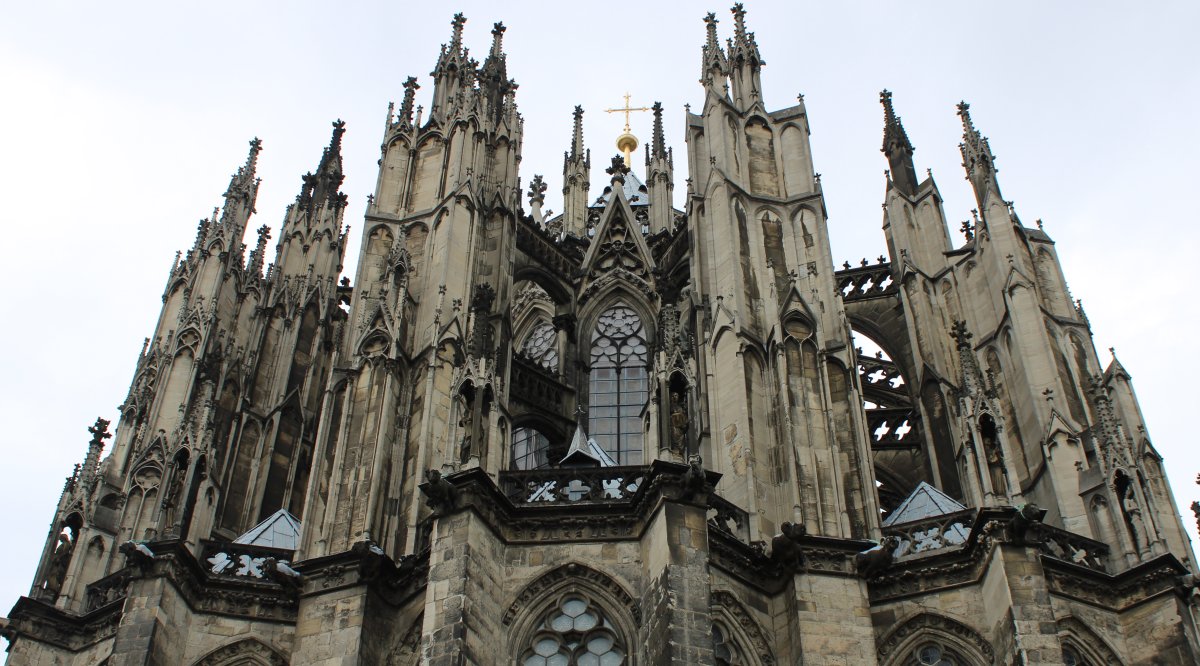 |
|
|
At the side of the Cathedral we looked down at the workshop. You can see some of the sandstone blocks that they shape to replace figures or pieces that are broken or worn.
|
| |
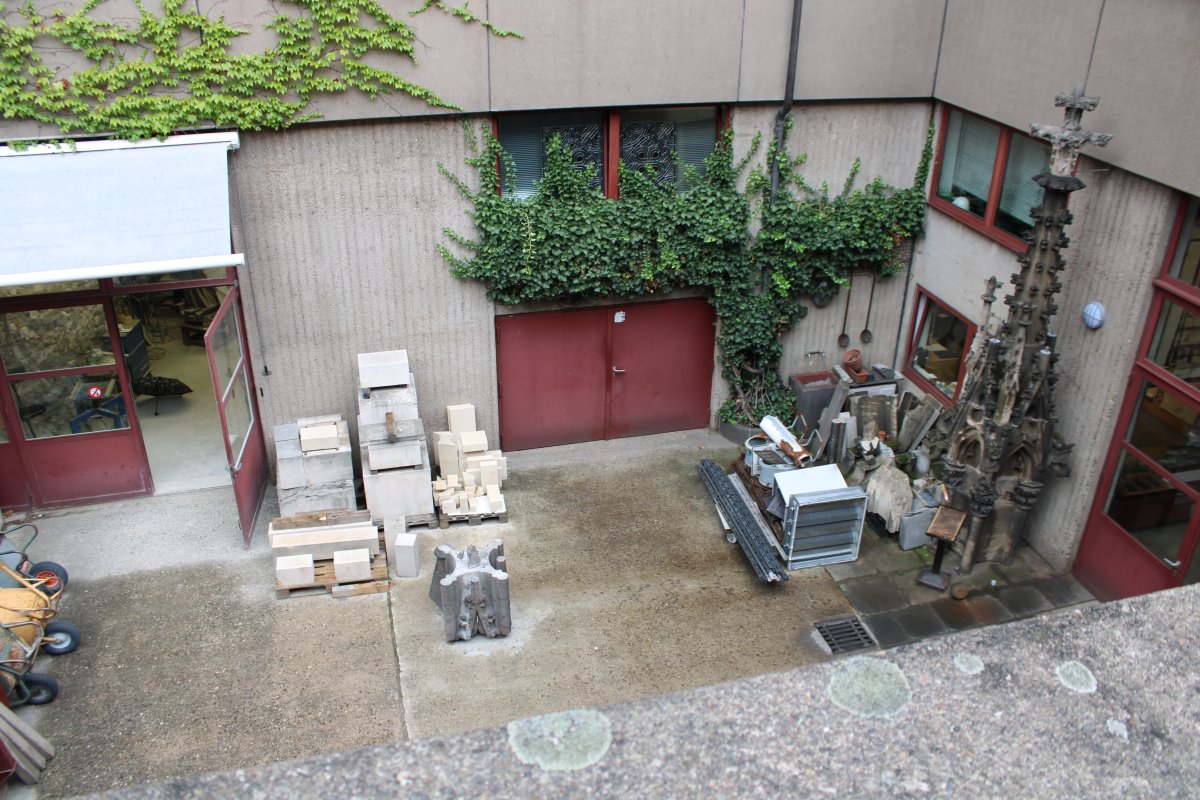 |
|
| The south side. |
| |
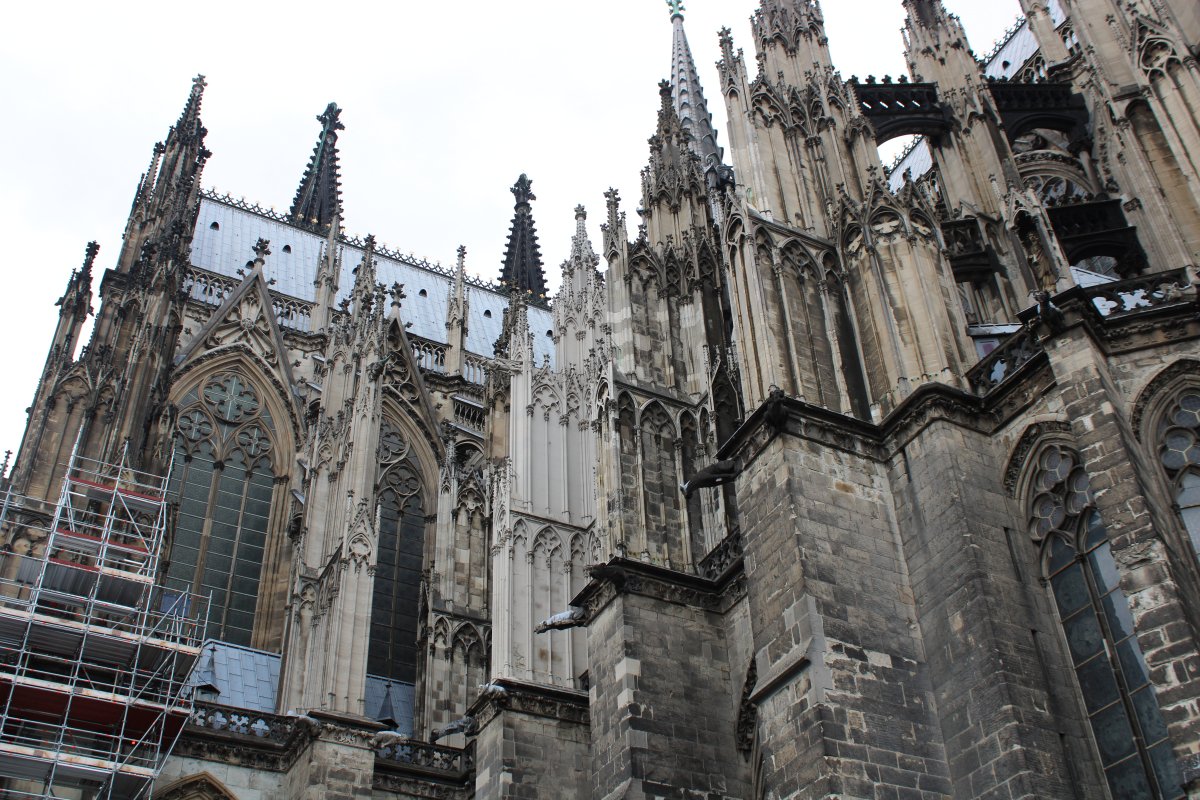 |
|
|
Right next to the Cathedral is the Roman-Germanic Museum. Alas, we did not have time to tour it, but the Guide has us look through the window at the museum's prize piece -- this mosaic floor that was once the dining-room floor of a rich Roman merchant in its original position.
|
| |
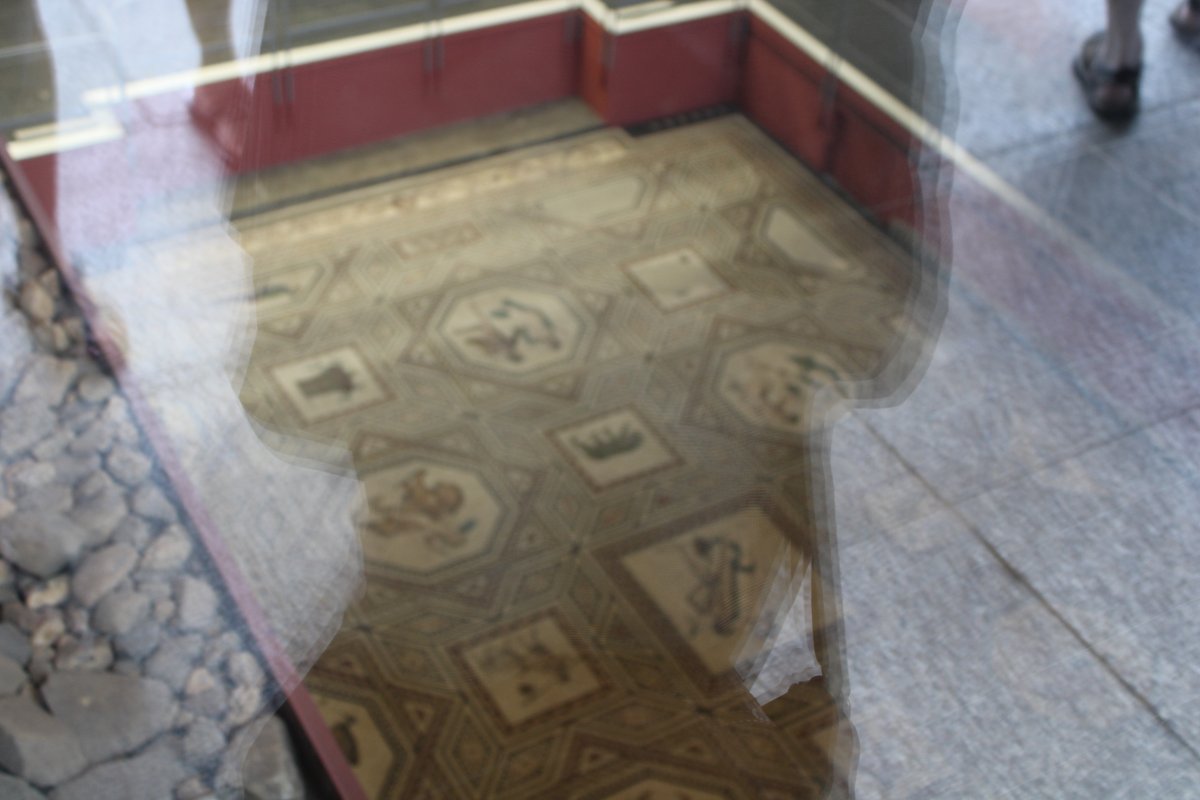 |
|
|
The mausoleum of a first-century Roman army officer.
From Wikipedia: In 50 AD, the Romans founded Colonia Claudia Ara Agrippinensium (Cologne) on the river Rhine and the city became the provincial capital of Germania Inferior in 85 AD. Considerable Roman remains have been found in present-day Cologne, especially near the wharf area, where a 1,900-year-old Roman boat was discovered in late 2007. From 260 to 271, Cologne was the capital of the Gallic Empire under Postumus, Marius, and Victorinus. In 310, under emperor Constantine I, a bridge was built over the Rhine at Cologne. Roman imperial governors resided in the city and it became one of the most important trade and production centres in the Roman Empire north of the Alps.
|
| |
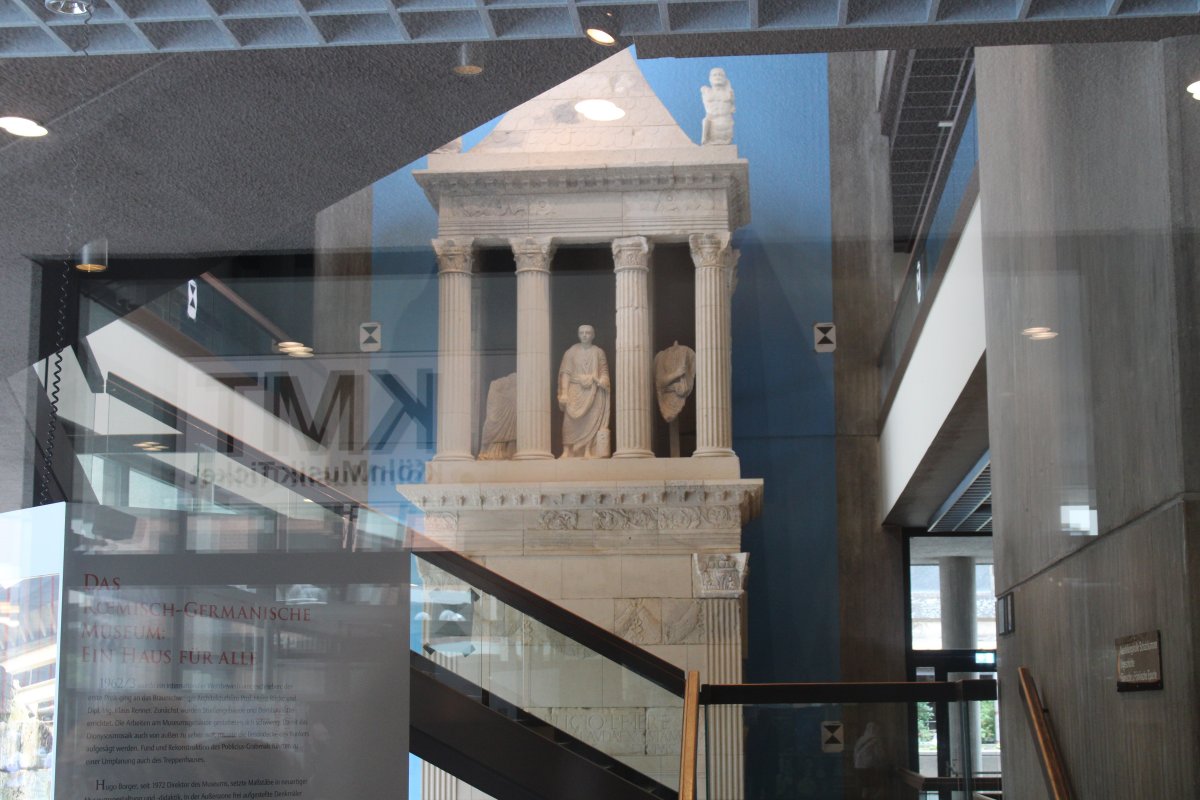 |
|
| |
| |
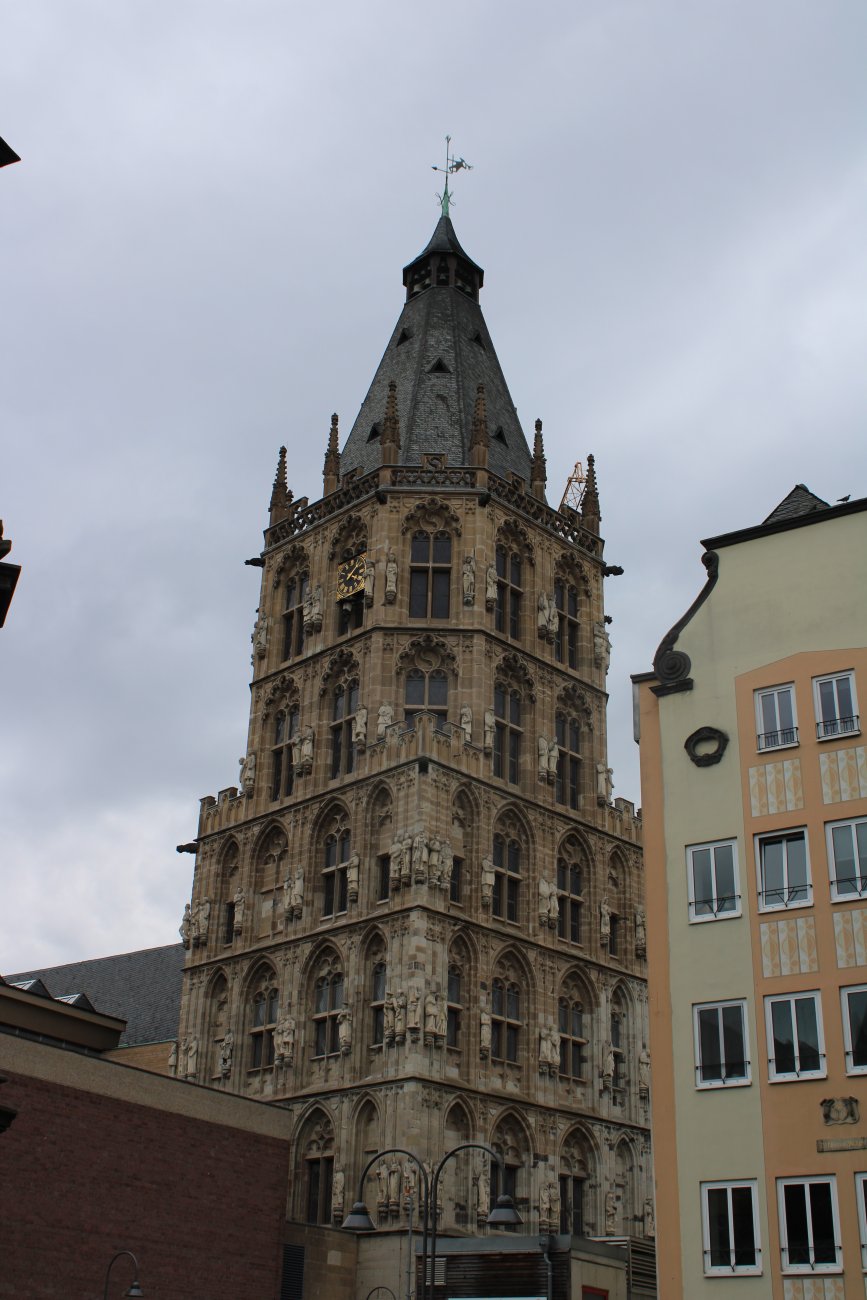 |
|
| Passing by some kind of virtual reality deal. |
| |
 |
|
Great St. Martin Church. A Romanesque Catholic church whose foundations rest on remnants of a Roman chapel, built on what was then an island in the Rhine. The church was later transformed into a Benedictine monastery. The current buildings, including a soaring crossing tower that is a landmark of Cologne's Old Town, were erected between 1150-1250.
|
| |
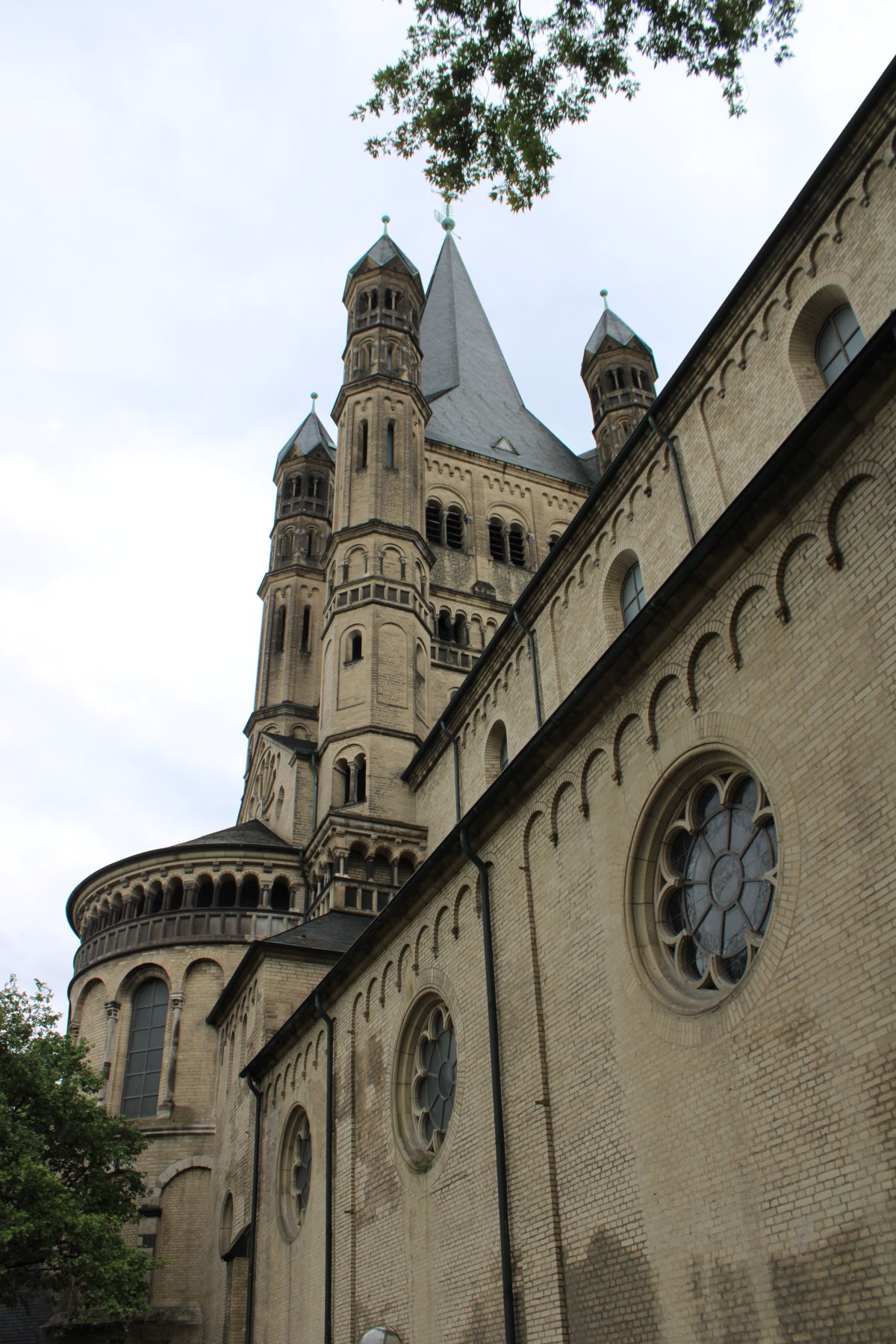 |
|
| Beer House! |
| |
 |
|
|
|
| |
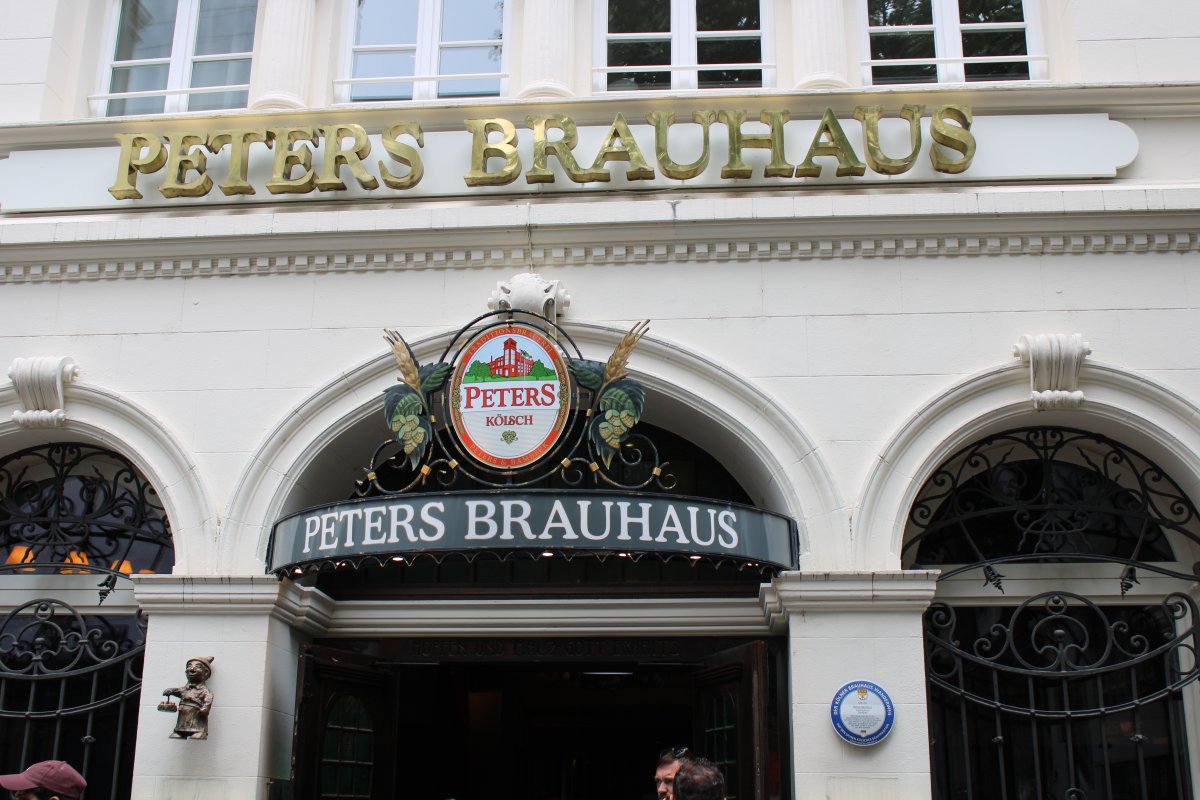 |
|
| |
| |
 |
|
| |
| |
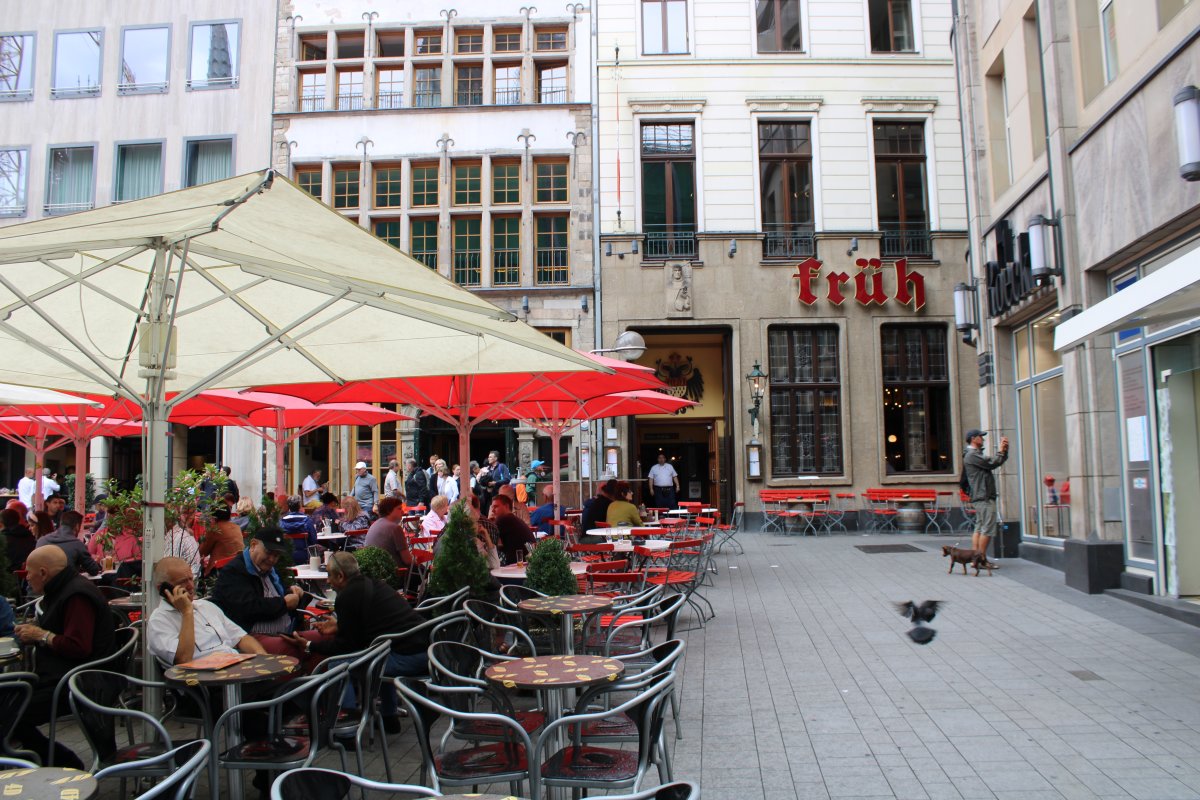 |
|
|
The area in front of the Cathedral. Our guide who had a witty sense of humor called the McDonalds "The American Embassy".
|
| |
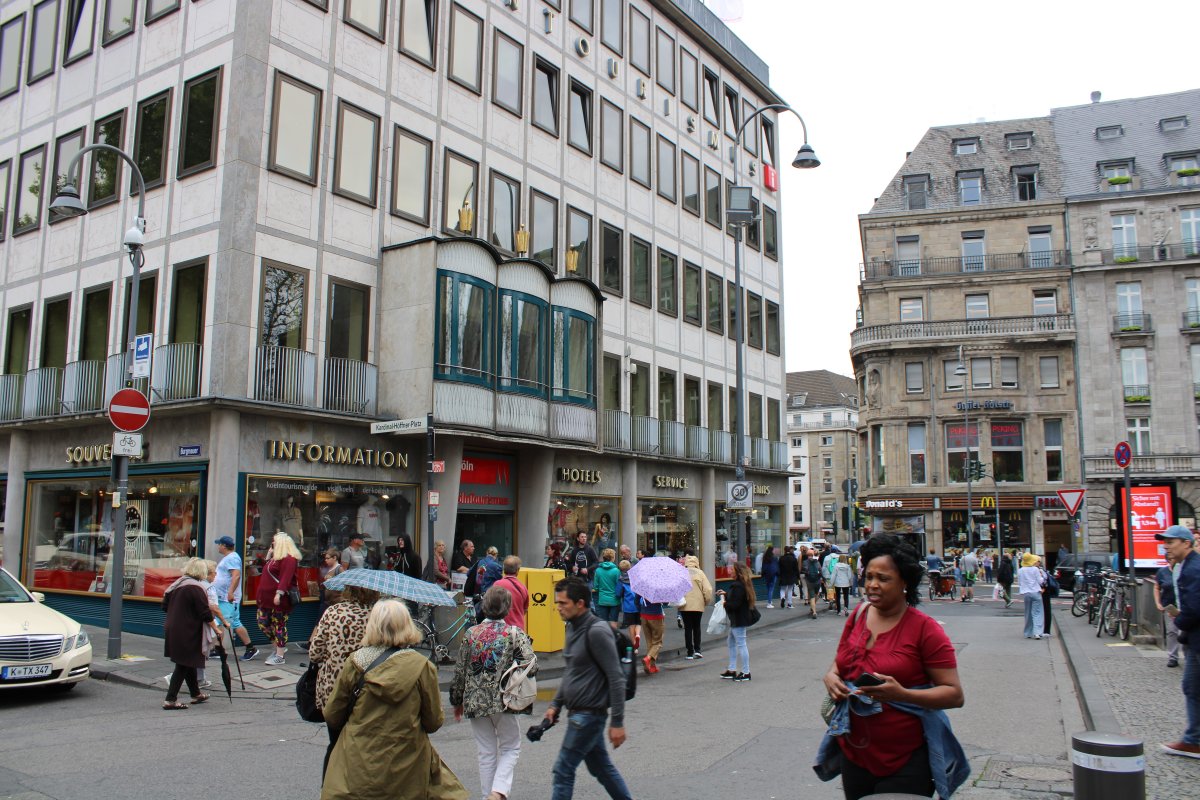 |
|
|
Aerial view of the Cologne Cathedral.
Unfortunately, Cologne revealed the problem with Cruises. The cruise excursions simply do not give you enough time to really see the best things a city has to offer. Although I will say on this cruise, the tour guides were outstanding. There was just not enough time. I think Cologne is deserving of half a day at least.
|
| |
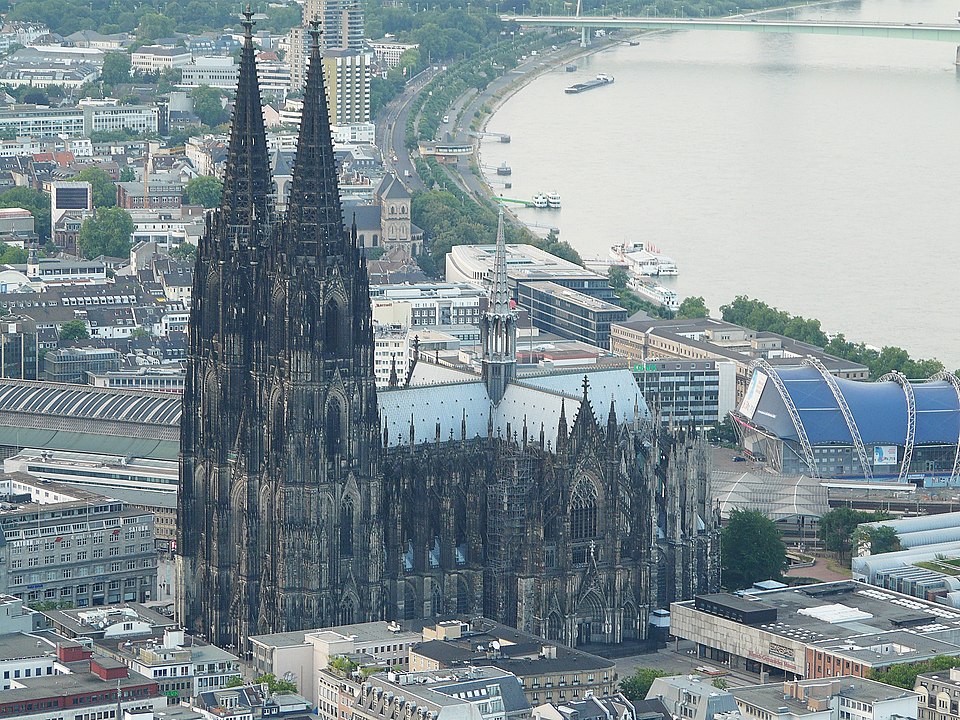 |
|
| |
| |
|
|
|
|
|
|











































